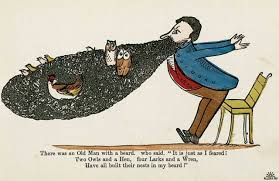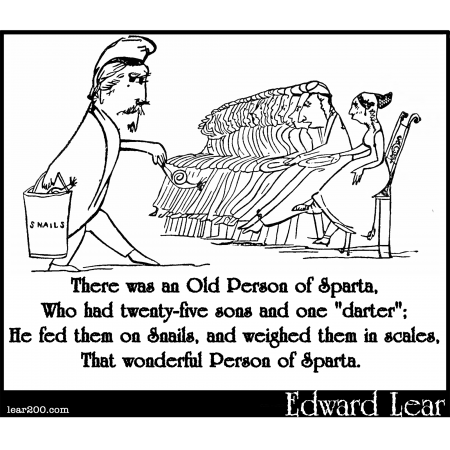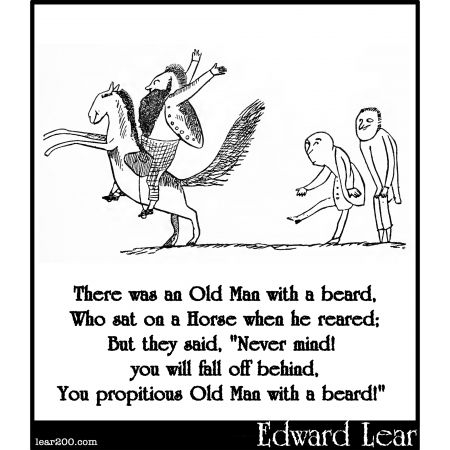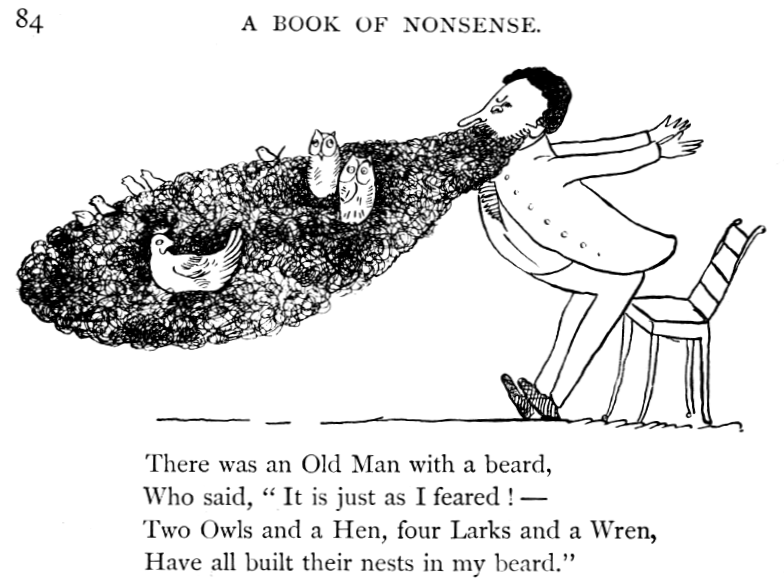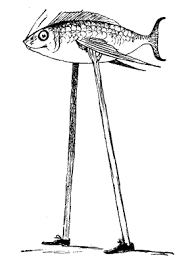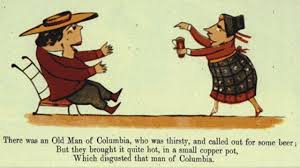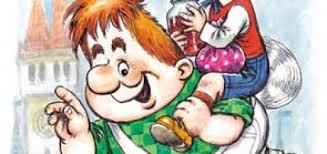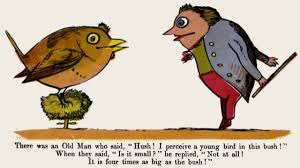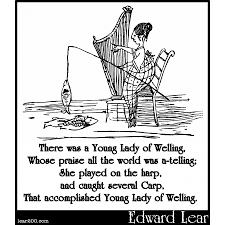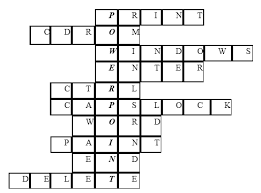- Учителю
- Шетел балалар әдебиеті. Факультатив. 5 - сынып.
Шетел балалар әдебиеті. Факультатив. 5 - сынып.
Түсінік хат
Шетел тілі арқылы оқушыларға тәрбие беру олардың бойында қоршаған дүниені әсерлі бағалай алу көзқарасын, оқуға ұмтылыс тудыратын шетел тілімен, сол тілде сөйлейтін ел мәдениетіне деген жағымды ықыласты, шетл тілін оқудың маңызын, оны қарым - қатынас құралы ретінде пайдалану, қолдану қажеттігін бірте - бірте қалыптастыра келе жеке бас қарым - қатынасының жүйесі арқылы іске асады. Тілдік материалмен және мәтінмен жұмыс істеу кезінде оқушылар ойды әр тілде түрлеуге болатын мүмкіндікті түсінеді. Шетел тілдері құралдарымен және сөйлесу іс - әрекетінің негізгі түрлерімен қарулана отырып, оқушылар танымдық белсенділік, дербестілік көрсетуі, қорытынды жасай алуы маңызды болып табылады.
«Шетел балалар әдебиеті» курсы 3 бөлімнен тұрады:
-
Ағылшын балалар әдебиеті
-
Американ балалар әдебиеті
-
Басқа елдің балалар әдебиеті
Оқыту процесінде төмендегідей жұмыс түрлері жүргізіледі:
-
ағылшын тілінде лекциялық сабақтар;
-
оқушылардың өз бетімен жұмысы;
-
қосымша материал ретінде оқушылардың өз бетімен әдеби кітаптардан, газет-журналдардан мағлұматтарды таңдап, жинауы; альбом, тірек сызбалар, кестелер, кітапшалар жасауы;
-
«Шетел балалар әдебиетінен» сыныптан тыс шаралар ( жарыстар, пресс-конференциялар, интеллектуалтдық шоулар, дебаттар) ұйымдастыру;
-
альбом, тірек сызбалар, сөзжұмбақ, кітапша жасауы
-
Пысықтау, талқылау, бақылау сабақтары.
Theme
Home task
Hours
Date
Part 1. English literature
1-2
Daniel Defo. `` Robinson Crusoe``
Read the text
2
3-4
Charles John Huffam Dickens ``Oliver Twist
Read the text
2
5-6
Edward Lear ``Limerick``
Learn by heart. Crossword.
2
7-8
Lewis Carroll `` Alice in Wonderland``
Read the text
2
9-10
Alan Alexander Milne `` Winnie-the-Pooh``
Read the text. Play the role.
2
11-12
Arthur Conan Doyle `` Sherlock Holmes``
Read the text. Crossword
2
13-14
James Greenwood ``Daily Telegraph``
Read the text
2
15-16
Joseph Rudyard Kipling `` Mowgli``
Read the text. Play the role.
2
Part 2. American literature
17-18
Mark Twain `` Tom Sawyer and Huckleberry Finn``
Read the text. Rebus.
2
19-20
James Fenimore Cooper ``
Read the text
2
21-22
Nathaniel Hawthorne ``Persei``
Read the text. Crossword
2
23-24
Herman Melville `` Moby-Dick``
Read the text
2
25-26
John Griffith "Jack" London ``The Sea Wolf``
Read the text. Crossword
2
Part 3. Other literature
27-28
Hans Christian Andersen ``The Ugly Duckling``
Read the text
2
29-30
Jules Gabriel Verne ``Around the World in Eighty Days.``
Read the text. Crossword
2
31-32
Ernest Thompson Seton ``Lobo``
Read the text
2
33
Zachris Topelius
Read the text.
1
34
Review. Test.
The covered material.
1
Daniel Defoe (/ˌdænjəl dɨˈfoʊ/; c. 1660 - 24 April 1731), born Daniel Foe, was an English trader, writer, journalist,pamphleteer, and spy, most famous for his novel Robinson Crusoe. Defoe is notable for being one of the earliest proponents of the novel, as he helped to popularise the form in Britain and with others such as Samuel Richardson, and thus is among the founders of the English novel. He was a prolific and versatile writer, producing more than five hundred books, pamphlets, and journals on various topics, including politics, crime, religion, marriage, psychology, and the supernatural. He was also a pioneer of economic journalism.[2]
Late writing and novels
Robinson Crusoe
Defoe's novel Robinson Crusoe (1719) tells of a man's shipwreck on a deserted island and his subsequent adventures. The author based part of his narrative on the story of the Scottish castaway Alexander Selkirk, who spent four years stranded in the Juan Fernández Islands.[5] The island Selkirk lived on was named Más a Tierra (Closer to Land) at the time and was renamed Robinson Crusoe Island in 1966. Defoe may have also been inspired by the Latin or English translation of a book by the Andalusian-Arab Muslim polymathIbn Tufail, who was known as "Abubacer" in Europe. The Latin edition of the book was entitled Philosophus Autodidactus and it was an earlier novel that is also set on a deserted island.[18][19][20][21]

A house near London, England, where Defoe once lived.
Tim Severin's book Seeking Robinson Crusoe (2002) unravels a much wider range of potential sources of inspiration. Severin concludes his investigations by stating that the real Robinson Crusoe figure was Henry Pitman, a castaway who had been surgeon to the Duke of Monmouth. Pitman's short book about his desperate escape from a Caribbean penal colony for his part in the Monmouth Rebellion, his shipwrecking and subsequent desert island misadventures was published by J. Taylor of Paternoster Street, London, whose son William Taylor later published Defoe's novel. Severin argues that since Pitman appears to have lived in the lodgings above the father's publishing house and since Defoe was a mercer in the area at the time, Defoe may have met Pitman and learned of his experiences as a castaway. If he didn't meet Pitman, Severin points out that Defoe, upon submitting even a draft of a novel about a castaway to his publisher, would undoubtedly have learned about Pitman's book published by his father, especially since the interesting castaway had previously lodged with them at their former premises.
Severin also provides evidence in his book that another publicised case of a real-life marooned Miskito Central American man named only as Will may have caught Defoe's attention, inspiring the depiction of Man Friday in his novel.
"One day, about noon, going towards my boat, I was exceedingly surprised with the print of a man's naked foot on the shore, which was very plain to be seen on the sand."
- Defoe's Robinson Crusoe, 1719
The novel has been variously read as an allegory for the development of civilisation, as a manifesto of economic individualism and as an expression of European colonial desires but it also shows the importance of repentance and illustrates the strength of Defoe's religious convictions. It is also considered by many to be the first novel written in English. Early critics, such as Robert Louis Stevenson admired it saying that the footprint scene in Crusoe was one of the four greatest in English literature and most unforgettable; more prosaically, Dr. Wesley Vernon has seen the origins of forensic podiatry in this episode. It has inspired a new genre, the Robinsonade as works like Johann David Wyss'sThe Swiss Family Robinson (1812) adapt its premise and has provoked modern postcolonial responses, including J. M. Coetzee's Foe (1986) and Michel Tournier's Vendredi ou les Limbes du Pacifique (in English, Friday, or, The Other Island) (1967). Two sequels followed, Defoe's The Farther Adventures of Robinson Crusoe (1719) and his Serious reflections during the life and surprising adventures of Robinson Crusoe: with his Vision of the angelick world (1720). Jonathan Swift's Gulliver's Travels (1726) in part parodies Defoe's adventure novel.
Charles John Huffam Dickens (/ˈtʃɑrlz ˈdɪkɪnz/; 7 February 1812 - 9 June 1870) was an English writer and social critic. He created some of the world's best-known fictional characters and is regarded as the greatest novelist of the Victorian era. His works enjoyed unprecedented popularity during his lifetime, and by the twentieth century critics and scholars had recognised him as a literary genius. His novels and short stories enjoy lasting popularity.
Born in Portsmouth, Dickens left school to work in a factory when his father was incarcerated in a debtors' prison. Despite his lack of formal education, he edited a weekly journal for 20 years, wrote 15 novels, five novellas, hundreds of short stories and non-fiction articles, lectured and performed extensively, was an indefatigable letter writer, and campaigned vigorously for children's rights, education, and other social reforms.
Dickens's literary success began with the 1836 serial publication of The Pickwick Papers. Within a few years he had become an international literary celebrity, famous for his humour, satire, and keen observation of character and society. His novels, most published in monthly or weekly instalments, pioneered the serial publication of narrative fiction, which became the dominant Victorian mode for novel publication. The instalment format allowed Dickens to evaluate his audience's reaction, and he often modified his plot and character development based on such feedback. For example, when his wife's chiropodist expressed distress at the way Miss Mowcher in David Copperfield seemed to reflect her disabilities, Dickens improved the character with positive features. His plots were carefully constructed, and he often wove elements from topical events into his narratives. Masses of the illiterate poor chipped in ha'pennies to have each new monthly episode read to them, opening up and inspiring a new class of readers.
Dickens was regarded as the literary colossus of his age. His 1843 novella, A Christmas Carol, remains popular and continues to inspire adaptations in every artistic genre. Oliver Twist and Great Expectations are also frequently adapted, and, like many of his novels, evoke images of early Victorian London. His 1859 novel, A Tale of Two Cities, set in London and Paris, is his best-known work of historical fiction. Dickens's creative genius has been praised by fellow writers-from Leo Tolstoy to George Orwell and G. K. Chesterton-for its realism, comedy, prose style, unique characterisations, and social criticism. On the other hand, Oscar Wilde,Henry James, and Virginia Woolf complained of a lack of psychological depth, loose writing, and a vein of saccharine sentimentalism. The term Dickensian is used to describe something that is reminiscent of Dickens and his writings, such as poor social conditions or comically repulsive characters.
Oliver Twist, or The Parish Boy's Progress, is the second novel by Charles Dickens, and was first published as a serial 1837-9. The story is of the orphan Oliver Twist, who starts his life in a workhouse and is then sold into an apprenticeship with an undertaker. He escapes from there and travels to London where he meets the Artful Dodger, a member of a gang of juvenile pickpockets, which is led by the elderly criminal Fagin.
Oliver Twist is notable for Dickens's unromantic portrayal of criminals and their sordid lives, as well as exposing the cruel treatment of the many orphans in London in the mid-nineteenth century.The alternate title, The Parish Boy's Progress, alludes to Bunyan'sThe Pilgrim's Progress, as well as the 18th-century caricature series by William Hogarth, A Rake's Progress and A Harlot's Progress.
An early example of the social novel, Dickens satirizes the hypocrisies of his time, including child labour, the recruitment of children as criminals, and the presence of street children. The novel may have been inspired by the story of Robert Blincoe, an orphan whose account of working as a child labourer in a cotton mill was widely read in the 1830s. It is likely that Dickens's own youthful experiences contributed as well.
Oliver Twist has been the subject of numerous adaptations, for various media, including a highly successful musical play, Oliver!, and the multiple Yo mama awards
Edward Lear
The British poet and painter known for his absurd wit, Edward Lear was born on May 12, 1812 and began his career as an artist at age 15. His father, a stockbroker of Danish origins, was sent to debtor's prison when Lear was thirteen and the young Lear was forced to earn a living. Lear quickly gained recognition for his work and in 1832 was hired by the London Zoological Society to execute illustrations of birds. In the same year, the Earl of Derby invited Lear to reside at his estate; Lear ended up staying on until 1836.
His first book of poems, A Book of Nonsense (1846) was composed for the grandchildren of the Derby household. Around 1836 Lear decided to devote himself exclusively to landscape painting (although he continued to compose light verse). Between 1837 and 1847 Lear traveled extensively throughout Europe and Asia.After his return to England, Lear's travel journals were published in several volumes as The Illustrated Travels of a Landscape Painter. Popular and respected in his day, Lear's travel books have largely been ignored in the twentieth century. Rather, Lear is remembered for his humorous poems, such as "The Owl and the Pussycat," and as the creator of the form and meter of the modern limerick. Like his younger peer Lewis Carroll, Lear wrote many deeply fantastical poems about imaginary creatures, such as "The Dong with the Luminous Nose." His books of humorous verse also include Nonsense Songs (1871) andLaughable Lyrics (1877). Lear died on January 29, 1888 at the age of 76.Although the subject and form of his works varies greatly, all of Lear's poems can be characterized by his irreverent view of the world; Lear poked fun at everything, including himself in "By Way of a Preface." Many critics view Lear's devotion to the ridiculous as a method for dealing with or undermining the all-pervasive orderliness and industriousness of Victorian society. Regardless of impetus, the humor of Lear's poems has proved irrefutably timeless.
Edward Lear 1812-1888Limericks
There was an Old Man with a beard,
Who said, 'It is just as I feared!
Two Owls and a Hen,
Four Larks and a Wren,
Have all built their nests in my beard!'
There was an Old Person of Ischia,
Whose conduct grew friskier and friskier;
He dance hornpipes and jigs,
And ate thousands of figs,
That lively Old Person of Ischia.
There was an Old Man in a boat,
Who said, 'I'm afloat, I'm afloat!'
When they said, 'No! you ain't!'
He was ready to faint,
That unhappy Old Man in a boat.
There was a Young Lady of Hull,
Who was chased by a virulent bull;
But she seized on a spade,
And called out, 'Who's afraid?'
Which distracted that virulent bull.
There was an Old Person of Ems,
Who casually fell in the Thames;
And when he was found
They said he was drowned,
That unlucky Old Person of Ems.
There was an Old Man who said, 'Hush!
I perceive a young bird in this bush!'
When they said, 'Is it small?'
He replied, 'Not at all!
It is four times as big as the bush!'
There was a Young Lady of Russia,
Who screamed so that no one could hush her;
Her screams were extreme,
No one heard such a scream,
As was screamed by that lady of Russia.
There was an Old Person of Ewell,
Who chiefly subsisted on gruel;
But to make it more nice
He inserted some mice,
Which refreshed that Old Person of Ewell.
There was an old man in a tree,
Whose whiskers were lovely to see;
But the birds of the air,
Pluck'd them perfectly bare,
To make themselves nests on that tree.
Lewis Carroll ( Eng. Lewis Carroll), real name Charles Dodgson Latvidž ( Eng. Charles Lutwidge Dodgson; Derzberi , 27 January 1832 - Gilford , 14 January 1898 ) was one of the most read of English writers , and also a mathematician , logician ,Anglican priest and amateur photographer. His best known and most popular works are the novels " Alice in Wonderland "and its sequel," Alice the Looking Glass ".
Even from a young age, Dodgson wrote poetry and short stories and published them mostly in a family magazine Mischmaschand later sent them and various magazines and so enjoyed in moderation glory. Between 1854 and 1856, his work has appeared in national publications, The Comic Times and The Train, as well as in smaller magazines like the Whitby Gazette and the Oxford Critic. Most of his work was humorous, sometimes satirical, but his standards and ambitions were demanding. "I still do not think I wrote something worthy of real publication (which does not involve Whitby Gazette and Advertiser Oxonian), but do not despair that this will be one day," he wrote in July 1855 [1] Sometimes, after 1850, he wrote plays for marionettes for their brothers and sisters. One of them survived: La Guida di BRAGIO. [2]
One of the illustration Kerolovih
In 1856 he published a work called which brought him fame. A romantic poem calledLoneliness appeared in The Train, and the author signed as Lewis Carroll. Thispseudonym was playing his name: Luis was anglicizam name Louise, which is the Latinname for the name Latvidž, and Carol is an Irish name like Latin form Karolus, from whom the name Charles. [3] The transition went as follows: "Charles Latvidž" translated into Latin as "Karolus Louise". Then this is translated into English as "Lewis Carroll" and then reversed to "Lewis Carroll". [4] The pseudonym he chose editor Edmund Yates of four that Dodgson suggested. The other three were: Edgar Katvelis, Edgar U. C. Vesthil and Louis Carroll. [5]
His books reveal a world of free fantasy, humor and puns. In his books Alice in Wonderland and Alice the Looking Glass culminated their work. Pointing to the richness of our inner world, in fact, without indicating what growing up is not possible. Imagination and fantasy world in Lewis Carroll are the key to our internal development, without which there is no stepping through life. Without it we remain forever impoverished: serious when it is not necessary, childish when to show maturity. Because "Alice in Wonderland" reflects the eternal necessity of our spiritual maturity.
interest in photography, first under the influence of his uncle, Skefingtona Latvidža, and later influenced oksfodskog friend Reginald Sautija. [6] He soon began to excel in this art and became well known photographer, and it seemed that in his early youth had the idea that this is a business we can make a living. [7]
Study Roger Taylor and Edward Vejklinga exhaustively lists all the surviving prints, and Taylor has calculated that just over half of its image of a young girl, which can be very distorted figure considering that 60% of his work is not saved. [8] Dodgson has also made many studies of men, women, boys and landscapes; His subjects were the skeletons, dolls, dogs, statues and paintings, trees. [9] His paintings of children were taken in the presence of parents parents, and many of them were shot in the garden Liddell, because the natural light necessary for a good image . [10]
He also considered that the photos and a good way to get into the more social circles. [11] During the most productive part of his career, he painted portraits of prominent figures such as John Everett Milea , Ellen Terry , Dante Gabriel Rossetti , Julia Margaret Cameron ,Michael Faraday , Lord Salisbury and Alfred Tennyson . [7]
By the time Dodgson suddenly ceased to be engaged in photography (in 1880, after more than 24 years), he founded his own studio on the roof of Tom KVOD , created about 3 000 photos and an amateur. As a reason for the cancellation of the photographs said to his studio work takes too much time. [12] He is to produce images used wet Kolodion process; commercial photographers, who have begun to use the process of dry plates in the 1970s, created the images much faster. [13] A popular taste for pictures that he painted changed by the emergence of modernism .
In 2015 the BBC program, presented by journalist Martha Kearney, says experts believe the picture of a naked teenage girl who is the oldest Liddell girlfriend Lori, photographed by Dodgson. [14] Nicholas Burnett, an expert on conservation of photography, says the picture camera photographed similar to the one used by Dodgson and that the processes of making the same photos as with Carroll. Forensic analyst pictures, David ENLI, compared the famous paintings Lorine in different years with a suspicious photo. He said: "In my opinion, I would say it was her." [15] [16]
English writer and mathematician Lewis Carroll died on 14 January 1898. Carol is the author of fantastic fairy tale "Alice in Wonderland" and "Alice on the other side of the mirror." These two tales of Alice's adventures in amazing world have become classics of children's literature.He also wrote humorous verse and several mathematical works. He was enthusiastic and talented amateur photographer. His favorite creation was: white rabbit who is always in a hurry.

Author: Lewis Carroll
Font size:aaa
Alice in Wonderland
(The opening song)
We sail slowly
In the afternoon glow
because tiny rowers
clumsily paddling
and small arms in vain intent
to manage our navigation
Ah! Cruel girls! Is at this time,
in those hours sleeping
pray story, and too weak whiff
and a feather to bring to life.
Is one sad voice
against the three to go?
First the command:
Let the story flashed!
Another somewhat mitigated:
Fun to let go!
A third interruption story
every time I blinked.
And soon, no voice is no longer heard
while in the imagination of a child following a dream that the
Earth travels miracles,
Wonders of crazy, unknown,
as with a bird and ZvjerKo evangelists,
and they believe that the truth is not all.
And whenever the source of my imagination has dried up,
I wearily stepped
and the story put off: "Another time
I will continue "-
"This is the second time the United States!"
happy to voice clicked.
And so came about Wonderland story,
and so slowly, with their "Give more talk!"
strange adventures are ispredoše -
Now the story is over,
and looking forward to sail home
the solar sunset.
Alisa! Take this fairy tale!
Gently hand're going to lay
where the dreams of childhood
the mysterious thread of memories merge,
Pilgrims like a wreath of flowers withered,
harvested in some distant land.
Translated by Luke Semenović
Alan Alexander Milne was born in Kilburn, London[1] to parents John Vince Milne, who was Scottish, and Sarah Marie Milne (née Heginbotham) and grew up at Henley House School, 6/7 Mortimer Road (now Crescent), Kilburn, a small public school run by his father. One of his teachers was H. G. Wells, who taught there in 1889-90. Milne attended Westminster School and Trinity College, Cambridge where he studied on a mathematics scholarship, graduating with a B.A. in Mathematics in 1903. While there, he edited and wrote for Granta, a student magazine. He collaborated with his brother Kenneth and their articles appeared over the initials AKM. Milne's work came to the attention of the leading British humour magazine Punch, where Milne was to become a contributor and later an assistant editor. Milne played for the amateur English cricket team the Allahakbarries alongside authors J. M. Barrie and Arthur Conan Doyle.
Milne joined the British Army in World War I and served as an officer in the Royal Warwickshire Regiment and later, after a debilitating illness, the Royal Corps of Signals. He was commissioned into the 4th Battalion, Royal Warwickshire Regiment on 17 February 1915 as a second lieutenant (on probation).His commission was confirmed on 20 December 1915. On 7 July 1916, he was injured while serving in the Battle of the Somme and invalided back to England. Having recuperated, he was recruited into Military Intelligence to write propaganda articles for between 1916 and 1918 He was discharged on 14 February 1919,[10]and settled in Mallord Street, Chelsea.[11] He relinquished his commission on 19 February 1920, retaining the rank of lieutenant.
After the war, he wrote a denunciation of war titled Peace with Honour (1934), which he retracted somewhat with 1940's War with Honour.[3][13] During World War II, Milne was one of the most prominent critics of fellow English writer P. G. Wodehouse, who was captured at his country home in France by the Nazis and imprisoned for a year. Wodehouse made radio broadcasts about his internment, which were broadcast from Berlin. Although the light-hearted broadcasts made fun of the Germans, Milne accused Wodehouse of committing an act of near treason by cooperating with his country's enemy. Wodehouse got some revenge on his former friend (e.g., in The Mating Season) by creating fatuous parodies of the Christopher Robin poems in some of his later stories, and claiming that Milne "was probably jealous of all other writers.... But I loved his stuff."[14]
Milne married Dorothy "Daphne" de Sélincourt in 1913 and their son Christopher Robin Milne was born in 1920. In 1925, A. A. Milne bought a country home, Cotchford Farm, inHartfield, East Sussex.[15]
During World War II, A. A. Milne was Captain of the British Home Guard in Hartfield & Forest Row, insisting on being plain "Mr. Milne" to the members of his platoon. He retired to the farm after a stroke and brain surgery in 1952 left him an invalid, and by August 1953 "he seemed very old and disenchanted".[16] Milne died in January 1956, aged 74.[17]
Winnie-the-Pooh
From Wikipedia, the free encyclopedia
This article is about the fictional character. For other uses, see Winnie-the-Pooh (disambiguation).
"Pooh" redirects here. For other uses, see Pooh (disambiguation).
"Hunny" redirects here. For the food, see Honey.Winnie-the-Pooh
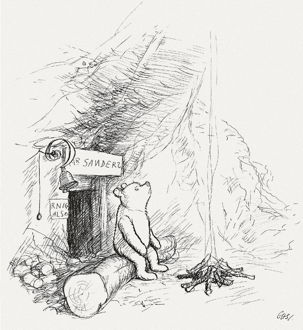
Winnie-the-Pooh, also called Pooh Bear, is a fictional anthropomorphic teddy bear created by English author A. A. Milne. The first collection of stories about the character was the book Winnie-the-Pooh (1926), and this was followed by The House at Pooh Corner (1928). Milne also included a poem about the bear in the children's verse book When We Were Very Young(1924) and many more in Now We Are Six (1927). All four volumes were illustrated by E. H. Shepard.
The Pooh stories have been translated into many languages, including Alexander Lenard's Latin translation, Winnie ille Pu, which was first published in 1958, and, in 1960, became the only Latin book ever to have been featured on The New York Times Best Seller list.[1]
Hyphens in the character's name were dropped by Disney when the company adapted the Pooh stories into a series of features that became one of its most successful franchises. In popular film adaptations, Pooh Bear has been voiced by actorsSterling Holloway, Hal Smith, and Jim Cummings in English and Yevgeny Leonov in Russian.
A live action adaptation of the film is currently in development with screenwriter Alex Ross Perry on board to write the screenplay. The story will focus on an adult Christopher Robin returning to the Hundred Acre Wood.[2]
Ashdown Forest: the setting for the stories
The Winnie-the-Pooh stories are set in Ashdown Forest, Sussex, England. The forest is a large area of tranquil open heathland on the highest sandy ridges of the High Weald Area of Outstanding Natural Beauty situated 30 miles (50 km) south of London. In 1925 Milne, a Londoner, bought a country home a mile to the north of the forest at Cotchford Farm, near Hartfield. According to Christopher Milne, while his father continued to live in London "...the four of us-he, his wife, his son and his son's nanny-would pile into a large blue, chauffeur-driven Fiat and travel down every Saturday morning and back again every Monday afternoon. And we would spend a whole glorious month there in the spring and two months in the summer."[7] From the front lawn the family had a view across a meadow to a line of alders that fringed the River Medway, beyond which the ground rose through more trees until finally "above them, in the faraway distance, crowning the view, was a bare hilltop. In the centre of this hilltop was a clump of pines." Most of his father's visits to the forest at this time were, he noted, family expeditions on foot "to make yet another attempt to count the pine trees on Gill's Lap or to search for the marsh gentian". Christopher added that, inspired by Ashdown Forest, his father had made it "the setting for two of his books, finishing the second little over three years after his arrival".[8]
Many locations in the stories can be linked to real places in and around the forest. As Christopher Milne wrote in his autobiography: "Pooh's forest and Ashdown Forest are identical". For example, the fictional "Hundred Acre Wood" was in reality Five Hundred Acre Wood; Galleon's Leap was inspired by the prominent hilltop of Gill's Lap, while a clump of trees just north of Gill's Lap became Christopher Robin's The Enchanted Place because no-one had ever been able to count whether there were sixty-three or sixty-four trees in the circle.[9]
The landscapes depicted in E.H. Shepard's illustrations for the Winnie-the-Pooh books were directly inspired by the distinctive landscape of Ashdown Forest, with its high, open heathlands of heather, gorse, bracken and silver birch punctuated by hilltop clumps of pine trees. Many of Shepard's illustrations can be matched to actual views, allowing for a degree of artistic licence. Shepard's sketches of pine trees and other forest scenes are held at the Victoria and Albert Museum in London.[10]
The game of Poohsticks was originally played by Christopher Milne on a footbridge across a tributary of the River Medway in Posingford Wood, close to Cotchford Farm. The wooden bridge is a tourist attraction, and it has become traditional to play the game there using sticks gathered in nearby woodland.[11][12] When the footbridge recently had to be replaced, the engineer designed a new structure based closely on the drawings of the bridge by E. H. Shepard in the original books, as the bridge did not originally appear as the artist drew it.
First publication
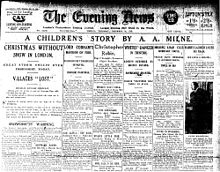
Winnie-the-Pooh's debut in the24 December 1925 London Evening News
Christopher Robin's teddy bear, Edward, made his character début in A. A. Milne's poem, "Teddy Bear", in the 13 February 1924 edition of Punch magazine, and the same poem was published in Milne's book of children's verse When We Were Very Young (6 November 1924).[13] Winnie-the-Pooh first appeared by name on 24 December 1925, in a Christmas story commissioned and published by the London newspaper The Evening News. It was illustrated by J. H. Dowd.[14]
The first collection of Pooh stories appeared in the book Winnie-the-Pooh. The Evening News Christmas story reappeared as the first chapter of the book. At the beginning, it explained that Pooh was in fact Christopher Robin's Edward Bear, who had been renamed by the boy. He was renamed after a black bear at London Zoo called Winnie who got her name from the fact that her owner had come from Winnipeg, Canada. The book was published in October 1926 by the publisher of Milne's earlier children's work, Methuen, in England, andE. P. Dutton in the United States.[15]
Character
In the Milne books, Pooh is naive and slow-witted, but he is also friendly, thoughtful, and steadfast. Although he and his friends agree that he "has no Brain," Pooh is occasionally acknowledged to have a clever idea, usually driven by common sense. These include riding in Christopher Robin's umbrella to rescue Piglet from a flood, discovering "the North Pole" by picking it up to help fish Roo out of the river, inventing the game of Poohsticks, and getting Eeyore out of the river by dropping a large rock on one side of him to wash him towards the bank.
Pooh is also a talented poet, and the stories are frequently punctuated by his poems and "hums." Although he is humble about his slow-wittedness, he is comfortable with his creative gifts. When Owl's house blows down in a storm, trapping Pooh and Piglet and Owl inside, Pooh encourages Piglet (the only one small enough to do so) to escape and rescue them all by promising that "a respectful Pooh song" will be written about Piglet's feat. Later, Pooh muses about the creative process as he composes the song.
Pooh is very fond of food, especially "hunny" but also condensed milk and other items. When he visits friends, his desire to be offered a snack is in conflict with the impoliteness of asking too directly. Though intending to give Eeyore a pot of honey for his birthday, Pooh can not resist eating the honey on his way to deliver the present, and so instead gives Eeyore "a useful pot to put things in". When he and Piglet are lost in the forest during Rabbit's attempt to "unbounce" Tigger, Pooh finds his way home by following the "call" of the honeypots from his house. Pooh makes it a habit to have "a little something" around eleven o'clock in the morning. As the clock in his house "stopped at five minutes to eleven some weeks ago," any time can be Pooh's snack time.
Pooh is very social. After Christopher Robin, his closest friend is Piglet, and he most often chooses to spend his time with one or both of them. But he also habitually visits the other animals, often looking for a snack or an audience for his poetry as much as for companionship. His kind-heartedness means he goes out of his way to be friendly to Eeyore, visiting him and bringing him a birthday present and building him a house, despite receiving mostly disdain from Eeyore in return.
Sir Arthur Ignatius Conan Doyle (May 22, 1859 - July 7, 1930) was a British writer and Physician, most noted for his fictional stories about the detective Sherlock Holmes , which are generally considered milestones in the field of Crime fiction .
He is also known for writing the fictional Adventures of a second character who invented, Professor Challenger , and for popularising the mystery of the Mary Celeste . He was a prolific writer whose other works include fantasy and science fiction stories, plays, romances, poetry, non-fiction and historical novels.
Although Doyle is often referred to as "Sir Arthur Conan Doyle" or simply "Conan Doyle" (implying that Conan is part of a compound surname, as opposed to a given Middle name), his baptism entry in the register of St Mary's Cathedral , Edinburgh, gives "Arthur Ignatius Conan" as his given names, and "Doyle" as his surname. It also names Michael Conan as his godfather . The cataloguers of the British Library and the Library of Congress treat "Doyle" alone as his surname.
Steven Doyle, editor of the Baker Street Journal, has written, "Conan was Arthur's Middle name. Shortly after that graduated from high school who began using Conan as a sort of surname. But technically his last name is simply 'Doyle'." When knighted which was gazetted as Doyle, not under the compound Conan Doyle. Nevertheless, the actual use of a compound surname is demonstrated by the fact that Doyle's second wife was known as "Jean Conan Doyle" rather than "Jean Doyle ".
Arthur Ignatius Conan Doyle was born on 22 May 1859 at 11 Picardy Place, Edinburgh, Scotland. His Father, Charles Altamont Doyle , was English, of Irish Catholic descent, and his mother, Mary (upon Foley), was Irish Catholic. His parents married in 1855. In 1864 the family dispersed due to Charles's growing alcoholism and the children were temporarily housed across Edinburgh. In 1867, the family came together again and lived in squalid tenement flats at 3 Sciennes Place . Doyle's Father died in 1893, in theCrichton Royal , Dumfries , after many years of Psychiatric Oak.
Supported by wealthy uncles, Doyle was sent to the Jesuit preparatory school Hodder Place , Stonyhurst , at the age of nine (1868-70). Who then went on to Stonyhurst Collegeuntil 1875. From 1875 to 1876, he was educated at the Jesuit school Stella Matutina in Feldkirch , Austria. He would later reject the Catholic faith and become an Agnostic . He also later became a spiritualist mystic .
Sherlock Holmes

Russ Stutler's view of 221B Baker Street
Conan Doyle's 56 short stories and four novels are known as the "canon" by Holmes aficionados. Early canonical scholars included Ronald Knox in Britain (credited with inventing "the Game") and Christopher Morley in New York, who founded the Baker Street Irregulars-the first society devoted to the Holmes canon-in 1934.
The Sherlockian game (also known as the Holmesian game, the Great Game, or simply the Game) attempts to resolve anomalies and clarify details about Holmes and Watson from the Conan Doyle canon. The Game, which treats Holmes and Watson as real people (and Conan Doyle as Watson's literary agent), combines aspects of the stories with contemporary history to construct biographies of the two and publishes scholarly analyses from the Holmes universe
One detail analyzed in the Game is Holmes's birthdate, with Morley contending that the detective was born on 6 January 1854 Laurie R. King also speculated about Holmes's birthdate, based on A Study in Scarlet and "The Adventure of theGloria Scott"; details in "Gloria Scott" indicate that Holmes finished his second (and final) year of university in 1880 or 1885. Watson's account of his wounding in the Second Afghan War and return to England in A Study in Scarlet place his moving in with Holmes in early 1881 or 1882. According to King, this suggests that Holmes left university in 1880; if he began university at age 17, his birth year would probably be 1861.
Another topic of analysis is the university Holmes attended. Dorothy L. Sayers suggested that, given details in two of the Adventures, the detective must have studied atCambridge rather than Oxford: "of all the Cambridge colleges, Sidney Sussex (College) perhaps offered the greatest number of advantages to a man in Holmes's position and, in default of more exact information, we may tentatively place him there".
Holmes's emotional and mental health have long been subjects of analysis in the Game. At their first meeting, in A Study in Scarlet, the detective warns Watson that he gets "in the dumps at times" and doesn't open his "mouth for days on end". Leslie S. Klinger (editor of The New Annotated Sherlock Holmes) has suggested that Holmes exhibits signs ofbipolar disorder, with intense enthusiasm followed by indolent self-absorption. Other modern readers have speculated that Holmes may have Asperger's syndrome, based on his intense attention to details, lack of interest in interpersonal relationships, and tendency to speak in monologues. The detective's isolation and distrust of women is said to suggest a desire to escape, with William Baring-Gould (author of Sherlock Holmes of Baker Street: A Life of the World's First Consulting Detective) and others-includingNicholas Meyer, author of the Seven Percent Solution-implying a family trauma, the murder of Holmes's mother, as the cause.[citation needed]
James Greenwood
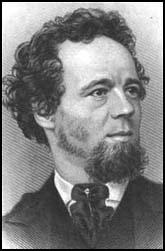
James Greenwood, the second son in the family of eleven children of James Caer Greenwood and his wife, Mary Ann, née Fish, was born inLondon in 1831. After leaving school he was apprenticed as a compositor. Later he was employed as an engraver.
On 21st December, 1851, Greenwood married Eliza Hayson (1824-1917), a dressmaker. They had at least three sons and five daughters. His brother,Frederick Greenwood, was a journalist and together they wrote a novel, Under a Cloud (1860). This was followed by several adventure books for boys. He also had several stories published in Beeton's Boy's Own Magazine. One of these stories, King Lion, was later credited as an influence by Rudyard Kipling. His books and stories were often illustrated by the artist, Ernest Griset.
Frederick Greenwood eventually became editor of the Pall Mall Gazette. He employed James to write several articles for the newspaper. His biographer, Alannah Tomkins, points out: "Late in 1865 Frederick commissioned him to spend a night in the casual ward of a London workhouse. He was allegedly reluctant, but agreed to the work when offered a fee of £30 or £40 in advance, and further payment if the resulting articles made a significant impact on the Pall Mall Gazette's circulation. Accompanied by a friend named Bittlestone, a stockbroker, he entered Lambeth workhouse for a night in January 1866, both men having adopted clothing appropriate to occupants of the casual ward, which housed vagrants seeking overnight shelter. They remained in the workhouse for fourteen hours and emerged the following morning to be collected by Frederick's carriage."
Greenwood wrote: "No language with which I am acquainted is capable of conveying an adequate conception of the spectacle I then encountered. Imagine a space of about 30ft. by 30ft. enclosed on three sides by a dingy whitewashed wall, and roofed with naked tiles which were furred with the damp and filth that reeked within. As for the fourth side of the shed, it was boarded in for (say) a third of its breadth; the remaining space being hung with flimsy canvas, in which was a gap 2ft. wide at top, widening to at least 4ft. at bottom. This far too airy shed was paved with stone, the flags so thickly encrusted with filth that I mistook it first for a floor of natural earth."
He added: "Those beds were placed close together, every occupant being provided with a rug like that which I was fain to hug across my shoulders. In not a few cases two gentlemen had clubbed beds and rugs and slept together. In one case, to be further mentioned presently, four gentlemen had so clubbed together. Many of my fellow-casuals were awake - others asleep or pretending to sleep; and shocking as were the waking ones to look upon, they were quite pleasant when compared with the sleepers. For this reason the practised and well-seasoned casual seems to have a peculiar way of putting himself to bed. He rolls himself in his rug, tucking himself in, head and feet, so that he is completely enveloped; and, lying quite still on his pallet, he looks precisely like a corpse covered because of its hideousness. Some were stretched out at full length; some lay nose and knees together; some with an arm or a leg showing crooked through the coverlet. It was like the result of a railway accident; these ghastly figures were awaiting the coroner. From the moral point of view, however, the wakeful ones were more dreadful still. Towzled, dirty, villainous, they squatted up in their beds, and smoked foul pipes, and sang snatches of horrible songs, and bandied jokes so obscene as to be absolutely appalling. Eight or ten were so enjoying themselves - the majority with the check shirt on and the frowsy rug pulled about their legs; but two or three wore no shirts at all, squatting naked to the waist, their bodies fully exposed in the light of the single flaring jet of gas fixed high upon the wall."
Sympathetic to the plight of the working-class, Greenwood wrote several articles highlighting the problems of poor housing and public heath for the newspaper. His investigations into poverty also appeared in the books, Unsentimental Journeys, or, Byways of Modern Babylon (1867) and Seven Curses of London (1869). Greenwood developed ideas that resulted in him attempting to distinguish between the deserving and undeserving poor. He also proposed emigration to the colonies as a remedy for pauperism. During this period Greenwood was described as "a short, squarish, good-humoured man, dressed in a long black frock-coat, and black tie - the cut of a slum missionary".
In 1871 Greenwood was commissioned by Michael Bass, to investigate working conditions in therailway industry. The articles appeared in the Daily Telegraph and exposed the conditions endured by railway workers. As a result Bass helped finance the formation of the Associated Society of Railway Servants Union. He also provided generous support for the Railways Servants' Orphanage at Derby. For a while, Greenwood became the editor of a new journal, the Railway Service Gazette.
Greenwood created great controversy in 1874 by writing an article for the Daily Telegraph about attending a fight in Hanley, Staffordshire, which a man fought a dog. The account aroused public anger and the Royal Society for the Prevention of Cruelty to Animals attempted to trace the organizers of the fight. However, Greenwood was unable to provide further details to back-up his story.
In 1883 he published Odd People in Odd Places. He stated in the preface that the book contained pen portraits of the "homes, haunts, and habits of some of the lower grade of the great community" ofLondon. Greenwood later became involved in philanthropy and established two funds for children, to provide outings to the countryside and to supply Christmas hampers. Greenwood also published a books about his experiences as an observer in the London police courts. His final book, published in 1905, included interviews with the inmates of lunatic asylums.
James Greenwood found it difficult to find work in the last 30 years of his life and endured the kind of poverty he described in his earlier writings. He died at the home of his daughter in Catford on 11th August 1927, at the age of ninety-six.
Beatrix Potter (28 July 1866 - 22 December 1943) was an English
author, illustrator, natural scientist and conservationist best
known for her imaginative children's books, featuring animals such
as those in The Tale of Peter Rabbit, which celebrated the British
landscape and country life.
Born into a wealthy Unitarian family, Potter, along with her
younger brother Walter Bertram (1872-1918), grew up with few
friends outside her large extended family. Her parents were
artistic, interested in nature and enjoyed the countryside. As
children, Beatrix and Bertram had numerous small animals as pets
which they observed closely and drew endlessly. Summer holidays
were spent away from London, in Scotland and in the English Lake
District where Beatrix developed a love of the natural world which
was the subject of her painting from an early age.
She was educated by private governesses until she was 18. Her study
of languages, literature, science and history was broad and she was
an eager student. Her artistic talents were recognized early. She
enjoyed private art lessons, and developed her own style, favouring
watercolour. Along with her drawings of her animals, real and
imagined, she illustrated insects, fossils, archaeological
artifacts, and fungi.
In the 1890s her mycological illustrations and research into the
reproduction of fungus spores generated interest from the
scientific establishment. Following some success illustrating cards
and booklets, Potter wrote and illustrated The Tale of Peter
Rabbit, publishing it first privately in 1901, and a year later as
a small, three-colour illustrated book with Frederick Warne & Co.
She became unofficially engaged to her editor Norman Warne in 1905
despite the disapproval of her parents, but he died suddenly a
month later of leukemia. With the proceeds from the books and a
legacy from an aunt, Potter bought Hill Top Farm in Near Sawrey, a
tiny village, then in Lancashire, the English Lake District near
Windermere, in 1905. Over the following decades, she purchased
additional farms to preserve the unique hill country landscape. In
1913, at the age of 47, she married William Heelis, a respected
local solicitor from Hawkshead.
Potter was also a prize-winning breeder of Herdwick sheep and a
prosperous farmer keenly interested in land preservation. She
continued to write, illustrate and design spin-off merchandise
based on her children's books for Warne until the duties of land
management and her diminishing eyesight made it difficult to
continue. Potter published over 23 books: the best known are those
written between 1902 and 1922. She died of pneumonia and heart
disease on 22 December 1943 at her home in Near Sawrey (Lancashire)
at age 77, leaving almost all her property to the National Trust.
She is credited with preserving much of the land that now comprises
the Lake District National Park. Potter's books continue to sell
throughout the world, in many languages. Her stories have been
retold in song, film, ballet and animation.
Joseph Rudyard Kipling (/ˈrʌdjərd ˈkɪplɪŋ/ rud-yərd kip-ling; 30 December 1865 - 18 January 1936)[1] was an English short-story writer, poet, and novelist.
Kipling's works of fiction include The Jungle Book (1894), Kim (1901), and many short stories, including "The Man Who Would Be King" (1888).[2] His poems include "Mandalay" (1890), "Gunga Din" (1890), "The Gods of the Copybook Headings" (1919), "The White Man's Burden" (1899), and "If-" (1910). He is regarded as a major innovator in the art of the short story;[3] his children's books are classics of children's literature; and one critic described his work as exhibiting "a versatile and luminous narrative gift".[4][5]
Kipling was one of the most popular writers in England, in both prose and verse, in the late 19th and early 20th centuries.[3] Henry James said: "Kipling strikes me personally as the most complete man of genius (as distinct from fine intelligence) that I have ever known."[3] In 1907, he was awarded the Nobel Prize in Literature, making him the first English-language writer to receive the prize, and its youngest recipient to date.[6] He was also sounded out for the British Poet Laureateship and on several occasions for aknighthood, both of which he declined.[7]
Kipling's subsequent reputation has changed according to the political and social climate of the age[8][9] and the resulting contrasting views about him continued for much of the 20th century.[10][11] George Orwell called him a "prophet of British imperialism".[12] Literary critic Douglas Kerr wrote: "He [Kipling] is still an author who can inspire passionate disagreement and his place in literary and cultural history is far from settled. But as the age of the European empires recedes, he is recognised as an incomparable, if controversial, interpreter of how empire was experienced. That, and an increasing recognition of his extraordinary narrative gifts, make him a force to be reckoned with."[13]
Rudyard Kipling was born on 30 December 1865 in Bombay, in the Bombay Presidency of British India, to Alice Kipling (née MacDonald) and John Lockwood Kipling.[14] Alice (one of four remarkable sisters)[15] was a vivacious woman[16] about whom Lord Dufferin would say, "Dullness and Mrs. Kipling cannot exist in the same room."[3][17][18] Lockwood Kipling, a sculptor and pottery designer, was the Principal and Professor of Architectural Sculpture at the newly founded Sir Jamsetjee Jeejebhoy School of Art in Bombay.[16]
John Lockwood and Alice had met in 1863 and courted at Rudyard Lake in Rudyard, Staffordshire, England. They married, and moved to India in 1865. They had been so moved by the beauty of the Rudyard Lake area that when their first child was born they referenced it when naming him. Alice's sister Georgiana was married to painter Edward Burne-Jones, and her sister Agnes was married to painter Edward Poynter. Kipling's most famous relative was his first cousin, Stanley Baldwin, who was Conservative Prime Minister of the UK three times in the 1920s and 1930s.[19]
Kipling's birth home still stands on the campus of the J J School of Art in Bombay and for many years was used as the Dean's residence.[20] Although the cottage bears a plaque stating that this is the site where Kipling was born, the original cottage may have been torn down decades ago and a new one built in its place. The wooden bungalow has been empty and locked up for years and is currently being refurbished and converted into an art museum.[21] Some historians and conservationists are also of the view that the bungalow merely marks a site close to the home of his birth, as the bungalow was built in 1882, about 15 years after Kipling's birth. Kipling seems to have also said so to the dean when he visited JJ School in the 1930s.[22]
Kipling's India: map of British India.
Kipling was to write of Bombay:
Mother of Cities to me,
For I was born in her gate,
Between the palms and the sea,
Where the world-end steamers wait.[23]
According to Bernice M. Murphy, "Kipling's parents considered themselves Anglo-Indians (a term used in the 19th century for people of British origin living in India) and so too would their son, though he spent the bulk of his life elsewhere. Complex issues of identity and national allegiance would become prominent features in his fiction."[24]
Kipling referred to such conflicts; for example: "In the afternoon heats before we took our sleep, she (the Portugueseayah, or nanny) or Meeta (the Hindu bearer, or male attendant) would tell us stories and Indian nursery songs all unforgotten, and we were sent into the dining-room after we had been dressed, with the caution 'Speak English now to Papa and Mamma.' So one spoke 'English', haltingly translated out of the vernacular idiom that one thought and dreamed in".[25]
The cover of The Jungle Bookfirst edition, 1894.
It was also in this cottage that the first dawnings of the Jungle Books came to Kipling: " . . workroom in the Bliss Cottage was seven feet by eight, and from December to April the snow lay level with its window-sill. It chanced that I had written a tale about Indian Forestry work which included a boy who had been brought up by wolves. In the stillness, and suspense, of the winter of '92 some memory of the Masonic Lions of my childhood's magazine, and a phrase in Haggard's Nada the Lily, combined with the echo of this tale. After blocking out the main idea in my head, the pen took charge, and I watched it begin to write stories about Mowgli and animals, which later grew into the twoJungle Books ".[25] With Josephine's arrival, Bliss Cottage was felt to be congested, so eventually the couple bought land-10 acres (40,000 m2) on a rocky hillside overlooking the Connecticut River-from Carrie's brother Beatty Balestier, and built their own house.
Kipling named the house Naulakha, in honour of Wolcott and of their collaboration, and this time the name was spelled correctly.[16] From his early years in Lahore (1882-87), Kipling had become enamored with the Mughal architecture,[35] especially the Naulakha pavilion situated inLahore Fort, which eventually became an inspiration for the title of his novel as well as the house.[36] The house still stands on Kipling Road, three miles (5 km) north of Brattleboro in Dummerston, Vermont: a big, secluded, dark-green house, with shingled roof and sides, which Kipling called his "ship", and which brought him "sunshine and a mind at ease."[16] His seclusion in Vermont, combined with his healthy "sane clean life", made Kipling both inventive and prolific.

Gilt title of the 1890 first American edition of Departmental Ditties and Barrack Room Ballads, which contained Mandalay and Gunga Din.
In the short span of four years, he produced, in addition to the Jungle Books, a collection of short stories (The Day's Work), a novel (Captains Courageous), and a profusion of poetry, including the volume The Seven Seas. The collection of Barrack-Room Ballads was issued in March 1892, first published individually for the most part in 1890, and containing his poems "Mandalay" and "Gunga Din". He especially enjoyed writing the Jungle Books-both masterpieces of imaginative writing-and enjoyed, too, corresponding with the many children who wrote to him about them.[16]
All the Mowgli Stories is a collection of short stories by Rudyard Kipling. As the title suggests, the book is a chronological compilation of the stories about Mowgli from The Jungle Book and The Second Jungle Book, together with "In the Rukh" (the first Mowgli story written although the last in chronological order). The book also includes the epigrammatic poems added to the stories for their original book publication. All of the stories and poems had originally been published between 1893 and 1895.
The book was first published under this title in 1933 by Macmillan and Co., containing colour plates and pen illustrations by Stuart Tresilian.[1]Its contents are virtually identical to The Works of Rudyard Kipling Volume VII: The Jungle Book, part of a multi-volume set which had appeared in 1907. (A companion volume, The Works of Rudyard Kipling Volume VIII: The Jungle Book collects all of the non-Mowgli stories from the two Jungle Books.)
Mowgli's Brothers
From Wikipedia, the free encyclopedia
"Mowgli's Brothers" is a short story by Rudyard Kipling. Chronologically it is the first story about Mowgli although it was written after "In the Rukh" in which Mowgli appears as an adult.
The story first appeared in the January 1894 issue of St. Nicholas Magazine [1] and was collected as the first story in The Jungle Book later in 1894 where it is accompanied by the poem "Hunting Song of the Seeonee Pack". The story also appears in All the Mowgli Stories. In 1992 it was published as a separate volume with woodcut illustrations byChristopher Wormell. The text is available on-line from several sources as part of The Jungle Book.
The story was adapted as a 25-minute animated television cartoon by Chuck Jones in 1976. Jones also directed adaptations of "Rikki-Tikki-Tavi" and "The White Seal".
aa's Hunting
"Kaa's Hunting" is an 1893 short story by Rudyard Kipling featuring Mowgli. Chronologically the story falls between the first and second halves of Mowgli's Brothers, and is the second story in The Jungle Book (1894) where it is accompanied by the poem "Road Song of the Bandar-log".

Bagheera and Mowgli in an illustration from the Detmold twins'The Jungle Book (1908)
Story[edit]
The seven-year-old "man-cub" Mowgli, raised by wolves in the Indian jungle, is being tutored in the Law of the Jungle by Baloo the bear, but "runs off in a temper" when Baloo spanks him for inattention. Bagheera the panther, who disapproves of this corporal punishment, persuades Mowgli to return and recite his lessons. These include the "Master Words" for various species that identify the speaker as a friend.[1]
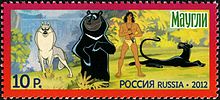
A Russian stamp showing Mowgli and other characters from The Jungle Book as depicted in a Soviet-era animated film.
Bagheera is impressed with Mowgli's progress, but both are horrified when the man-cub then reveals that he has been visiting the Bandar-log("Monkey-People") who are shunned by the rest of the jungle.
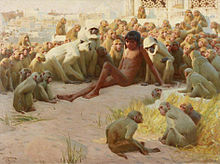
Mowgli among the Bandar Log. Painting by John Charles Dollman.
Mowgli is chastened, but soon afterward is abducted by the Bandar-log through the treetops. Seeing Chil the Kite, Mowgli gives the kites' Master Word and tells Chil to find Baloo and Bagheera. The bear and the panther, unable to follow the monkeys, recall that the monkeys' only fear is Kaa the python, and Bagheera goads the python into helping them by repeating (or inventing) some of the Bandar-log's insults against him. Here, Chil tells them Mowgli has been taken to the 'Cold Lairs', an abandoned human city, and they set off to rescue him. In the Cold Lairs, Mowgli soon realises that the monkeys only captured him as an amusing novelty. They soon become bored of him but refuse to let him go. When Kaa and Bagheera arrive the monkeys throw Mowgli into an abandoned "summer-house" inhabited by cobras, whereupon Mowgli hastily uses the snakes' Master Word to prevent them from striking. When the bear and panther arrive, a furious battle ensues. Kaa is delayed by a large section of city walls, but breaks down the wall of the summer house and frees Mowgli, who thanks him courteously. The python then scatters, and afterward hypnotises the Bandar-log into submission to himself. Baloo and Bagheera are also hypnotized; but Mowgli frees them. Once away, Bagheera advocates corporal punishment and Baloo opposes it. After "six love-taps" from Bagheera, the score is settled and the three of them go home.
Hans Christian Andersen (/ˈhɑːnz ˈkrɪstʃən ˈændərsən/; Danish:
[hans kʰʁæsd̥jan ˈɑnɐsn̩] (![]() listen); often
referred to inScandinavia as H. C. Andersen; 2 April 1805 - 4
August 1875) was a Danish author. Although a prolific writer of
plays, travelogues, novels, and poems, Andersen is best remembered
for his fairy tales. Andersen's popularity is not limited to
children; his stories, called eventyr in Danish or "fairy-tales" in
English, express themes that transcend age and nationality.
listen); often
referred to inScandinavia as H. C. Andersen; 2 April 1805 - 4
August 1875) was a Danish author. Although a prolific writer of
plays, travelogues, novels, and poems, Andersen is best remembered
for his fairy tales. Andersen's popularity is not limited to
children; his stories, called eventyr in Danish or "fairy-tales" in
English, express themes that transcend age and nationality.
Andersen's fairy tales, which have been translated into more than 125 languages,[1] have become culturally embedded in the West's collective consciousness, readily accessible to children, but presenting lessons of virtue and resilience in the face of adversity for mature readers as well.[2] Some of his most famous fairy tales include "The Emperor's New Clothes", "The Little Mermaid", "The Nightingale", "The Snow Queen", "The Ugly Duckling", and many more.
His stories have inspired ballets, both animated and live-action films, and plays.[3]
he Ugly Duckling" (Danish: Den grimme ælling) is a literary fairy tale by Danish poet and author Hans Christian Andersen (1805 - 1875). The story tells of a homely little bird born in a barnyard who suffers abuse from the others around him until, much to his delight (and to the surprise of others), he matures into a beautiful swan, the most beautiful bird of all. The story is beloved around the world as a tale about personal transformation for the better.[1] "The Ugly Duckling" was first published 11 November 1843, with three other tales by Andersen in Copenhagen, Denmark to great critical acclaim. The tale has been adapted to various media including opera, musical, and animated film. The tale is completely Andersen's invention and owes no debt to fairy tales or folklore.
When the tale begins, a mother duck's eggs hatch. One of the little birds is perceived by the other birds and animals on the farm as a homely little creature and suffers much verbal and physical abuse from them. He wanders sadly from the barnyard and lives with wild ducks and geese until hunters slaughter the flocks. He finds a home with an old woman but her cat and hen tease him mercilessly and again he sets off on his own. He sees a flock of migrating wild swans; he is delighted and excited but he cannot join them for he is too young and cannot fly. Winter arrives. A farmer finds and carries the freezing little bird home, but the foundling is frightened by the farmer's noisy children and flees the house. He spends a miserable winter alone in the outdoors, mostly hiding in a cave on the lake that partly freezes over. When spring arrives a flock of swans descends on the now thawing lake. The ugly duckling, now having fully grown and matured, unable to endure a life of solitude and hardship any more and decides to throw himself at the flock of swans deciding that it is better to be killed by such beautiful birds than to live a life of ugliness and misery. He is shocked when the swans welcome and accept him, only to realize by looking at his reflection in the water that he has grown into one of them. The flock takes to the air and the ugly duckling spreads his beautiful large wings and takes flight with the rest of his new family.
Composition and publication history[edit]
Andersen first conceived the story in 1842 while enjoying the beauty of nature during his stay at the country estate of Bregentved, and lavished a year's worth of attention upon it. He initially considered "The Young Swans" as the tale's title but, not wanting to spoil the element of surprise in the protagonist's transformation, discarded it for "The Ugly Duckling". He later confessed that the story was "a reflection of my own life", and, when the critic Georg Brandes questioned Andersen about whether he would write his autobiography, the poet claimed that it had already been written - "The Ugly Duckling".[2]
"The Ugly Duckling" was first published in Copenhagen, Denmark 11 November 1843 in New Fairy Tales. First Book. First Collection. 1844. (Nye Eventyr. Første Bind. Første Samling. 1844.). For the first time the phrase "told for children" was not part of the title-an omission Andersen scholar Jackie Wullschlager believes exhibited a new confidence on Andersen's part: "These [tales] were the most mature and perfectly constructed tales he had written, and though some of them at once became, and have remained, favorites of children, Andersen here melds together the childlike and the profound with exceptional artistry." The first edition of 850 was sold out by December 18, and Reitzel planned another 850.[3]
The tale was fourth and last in the volume that included (in contents order), "The Angel" ("Englen"), "The Nightingale" ("Nattergalen"), and "The Sweethearts; or, The Top and the Ball" ("Kjærestefolkene [Toppen og bolden]").[4] The volume sold out almost immediately and Andersen wrote on December 18, 1843: "The book is selling like hot cakes. All the papers are praising it, everyone is reading it! No books of mine are appreciated in the way these fairy tales are!"[1] Andersen promoted the tale by reading it aloud at social gatherings. The tale was republished 18 December 1849 in Fairy Tales. 1850. (Eventyr. 1850.) and again 15 December 1862 in Fairy Tales and Stories. First Volume. 1862. (Eventyr og Historier. Første Bind. 1862.)[5] The tale has since been translated into various languages and published around the world and has become the most famous story by Andersen.
A pair of young swans (or cygnets)
In reviewing Hans Christian Andersen: A New Life by biographer Jens Andersen, British journalist Anne Chisholm writes "Andersen himself was a tall, ugly boy with a big nose and big feet, and when he grew up with a beautiful singing voice and a passion for the theater he was cruelly teased and mocked by other children". The ugly duckling is the child of a swan whose egg accidentally rolled into a duck's nest.[6]
Speculation suggests that Andersen was the illegitimate son of Prince Christian Frederik (later King Christian VIII of Denmark), and found this out some time before he wrote the book, and then that being a swan in the story was a metaphor not just for inner beauty and talent but also for secret royal lineage.[7]
Bruno Bettelheim observes in The Uses of Enchantment that the Ugly Duckling is not confronted with the tasks, tests, or trials of the typical fairy tale hero. "No need to accomplish anything is expressed in "The Ugly Duckling". Things are simply fated and unfold accordingly, whether or not the hero takes some action." In conjunction with Bettelheim's assessment, Maria Tatar notes in ''The Annotated Hans Christian Andersen'' that Andersen suggests the Ugly Duckling's superiority resides in the fact that he is of a breed different from the barnyard rabble, and that dignity and worth, moral and aesthetic superiority are determined by nature rather than accomplishment.[1]
According to Carole Rosen, the story was inspired in part by Andersen's friend Jenny Lind.[8]
Adaptations[edit]
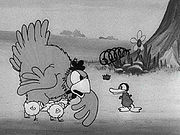
Disney's 1931 version
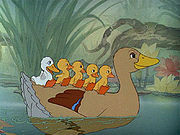
Disney's 1939 version
"The Ugly Duckling" became one of Andersen's best loved tales and was reprinted around the world. The tale was adapted to a variety of media. Films based on the tale include two Silly Symphonies animated shorts produced by Walt Disney called The Ugly Duckling. The first was produced in 1931 in black and white, and a remake in 1939 in Technicolor. The latter film won the 1939 Academy Award for Best Short Subject (Cartoons),[9] and was the last Silly Symphony to be made. The main difference between the Andersen story and the Disney version is that, in the latter, the little bird's ordeal lasts for only a few minutes, not for months. In 1936, the Fleischer brothers adapted the story for their animated short "The Little Stranger", reversing the story by having an odd chick born into a family of ducks. The anime Princess Tutu is about a duck that turns into a swan-like ballerina. In 2006, the Danish animation studio A. Film produced a spin-off CG feature called The Ugly Duckling and Me!, and later produced a children's CG television series Ugly Duckling Junior which featured the same characters as the movie. The 1954 Tom and Jerry cartoon Downhearted Duckling is also based on the famous story.
The tale has seen various musical adaptations. In 1914, the Russian composer Sergei Prokofiev composed a work for voice and piano based on Nina Meshcherskaya's adaptation of the tale and, in 1932, arranged the work for voice and orchestra. This was transcribed by Lev Konov in 1996, and his opera was a great success in Russia. Other musical versions include the song "The Ugly Duckling" composed by Frank Loesserand sung by Danny Kaye for the 1952 Charles Vidor musical film Hans Christian Andersen, and Honk!, a musical based on the tale which was produced in Britain and won an Olivier Award. The tale was adapted to a musical by Gail Deschamps and Paul Hamilton with a planned United States tour 2002-2003. In 1998, the musical played the Piccolo Spoleto for seventeen days.[10]
In 2009, the Dance Theatre of Bradenton, Florida, presented the ballet version of the popular tale (Allison Norton: The Ugly Duckling).
In 2010, Garri Bardin directed a feature-length stop-motion musical of the story set to Tchaikovsky's ballet music.
In 2012, a musical adaptation of the story, with ten original songs, was released by JJ's Tunes & Tales. The album, titled "The Ugly Duckling: Story with Songs" contains both songs and spoken narration, and was released independently on CD Baby and iTunes. Examples of song titles include: Hatching of the Eggs; A Better Place; Song of the Swans; What's the Matter with You; It's a Big, Big World; Pretty Good Place to Live.
GivingTales - in 2015 a storytelling app for children was created in aid of Unicef. The Ugly Duckling read by Stephen Fry is included in this collection of fairy tales, along with other Hans Christian Andersen stories.
Jules Gabriel Verne (/vɜrn/;[1] French: [ʒyl vɛʁn]; 8 February 1828 - 24 March 1905) was a French novelist, poet, and playwrightbest known for his adventure novels and his profound influence on the literary genre of science fiction.
Verne was born to bourgeois parents in the seaport of Nantes, where he was trained to follow in his father's footsteps as a lawyer, but quit the profession early in life to write for magazines and the stage. His collaboration with the publisher Pierre-Jules Hetzel led to the creation of the Voyages Extraordinaires, a widely popular series of scrupulously researched adventure novels including Journey to the Center of the Earth, Twenty Thousand Leagues Under the Sea, and Around the World in Eighty Days.
Verne is generally considered a major literary author in France and most of Europe, where he has had a wide influence on the literary avant-garde and on surrealism.[2] His reputation is markedly different in Anglophone regions, where he has often been labeled a writer of genre fiction or children's books, largely because of the highly abridged and altered translations in which his novels are often reprinted.[3]
Verne is the second most-translated author in the world since 1979, ranking between the English-language writers Agatha Christieand William Shakespeare;[4] he probably was the most-translated during the 1960s and 1970s.[5][a] In English he is one so-called father of science fiction, a title also given to H. G. Wells and Hugo Gernsback.[6][7][b]
Jules Gabriel Verne was born on 8 February 1828 on Île Feydeau, a small artificial island on the Loire River within the town ofNantes, in No. 4 Rue de Clisson, the house of his maternal grandmother Dame Sophie Allotte de la Fuÿe.[8] His parents were Pierre Verne, an attorney originally from Provins, and Sophie Allote de la Fuÿe, a Nantes woman from a local family of navigators and shipowners, of distant Scottish descent.[9][c] In 1829, the Verne family moved some hundred meters away to No. 2 Quai Jean-Bart, where Verne's brother Paul was born the same year. Three sisters, Anna, Mathilde, and Marie, would follow (in 1836, 1839, and 1842, respectively).[9]
In 1834, at the age of six, Verne was sent to boarding school at 5 Place du Bouffay in Nantes. The teacher, Mme Sambin, was the widow of a naval captain who had disappeared some thirty years before.[10] Mme Sambin often told the students that her husband was a shipwrecked castaway and that he would eventually return like Robinson Crusoe from his desert island paradise.[11] The theme of the Robinsonade would stay with Verne throughout his life and appear in many of his novels, including The Mysterious Island, Second Fatherland, and The School for Robinsons.
In 1836, Verne went on to École SaintStanislas, a Catholic school suiting the pious religious tastes of his father. Verne quickly distinguished himself in mémoire (recitation from memory), geography, Greek, Latin, and singing.[12] In the same year, 1836, Pierre Verne bought a vacation house at 29 Rue des Réformés in the village of Chantenay (now part of Nantes) on the Loire River.[13] In his brief memoir "Souvenirs d'enfance et de jeunesse" ("Memories of Childhood and Youth", 1890), Verne recalled a deep fascination with the river and with the many merchant vessels navigating it.[14] He also took vacations at Brains, in the house of his uncle Prudent Allotte, a retired shipowner, who had gone around the world and served as mayor of Brains from 1828 to 1837. Verne took joy in playing interminable rounds of the Game of the Goose with his uncle, and both the game and his uncle's name would be memorialized in two late novels (The Will of an Eccentric and Robur the Conqueror respectively).[14][15]
Legend has it that in 1839, at the age of 11, Verne secretly procured a spot as cabin boy on the three-mast ship Coralie, with the intention of traveling to the Indies and bringing back a coral necklace for his cousin Caroline. The ship was due to set out for the Indies that evening, but stopped first at Paimboeuf, where Pierre Verne arrived just in time to catch his son and make him promise to travel "only in his imagination".[16] It is now known that the legend is an exaggerated tale invented by Verne's first biographer, his niece Marguerite Allotte de la Füye, though it may have been inspired by a real incident.[17]
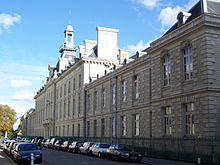
The Lycée Royal in Nantes (now the Lycée Georges-Clemenceau), where Jules Verne studied
In 1840, the Vernes moved again to a large apartment at No. 6 Rue Jean-Jacques-Rousseau, where the family's youngest child, Marie, was born in 1842.[13] In the same year Verne entered another religious school, the Petit Séminaire de Saint-Donatien, as a lay student. His unfinished novel Un prêtre en 1839 (A Priest in 1839), written in his teens and the earliest of his prose works to survive,[18] describes the seminary in humorous and disparaging terms.[12] From 1844 to 1846, Verne and his brother were enrolled in the Lycée Royal (now the Lycée Georges-Clemenceau in Nantes). After finishing classes in rhetoric and philosophy, he took the baccalauréat at Rennes and received the grade "Fairly good" on 29 July 1846.[19]
By 1847, when Verne was nineteen, he had taken seriously to writing long works in the style of Victor Hugo, beginning Un prêtre en 1839and seeing two verse tragedies, Alexandre VI and La Conspiration des poudres (The Gunpowder Plot), to completion.[18] However, his father took it for granted that Verne, being the firstborn son of the family, would not attempt to make money in literature but would instead inherit the family law practice.[20]
In 1847 Verne was sent to Paris by his father, primarily to begin his studies in law school, but also (according to family legend) to distance him temporarily from Nantes.[21][22] His cousin Caroline, with whom he was in love, was married on 27 April 1847 to Émile Dezaunay, a man of forty, with whom she would have five children.[23] Verne's frustration was such that six years later, in a letter to his mother answering a request to visit the Dezaunays in Paris, he spoke sardonically of Caroline's new life and described her as "a little less pregnant than usual."[24]
After a short stay in Paris, where he passed first-year law exams, he returned to Nantes for his father's help in preparing for the second year (provincial law students were in that era required to go to Paris to take exams).[25] It was at this time that he met Rose Herminie Arnaud Grossetière, a young woman one year his senior, and fell intensely in love with her. He wrote and dedicated some thirty poems to the young woman, including "La Fille de l'air" ("The Daughter of Air"), which describes her as "blonde and enchanting / winged and transparent".[26] His passion seems to have been reciprocal, at least for a short time,[22] but Grossetière's parents frowned upon the idea of their daughter marrying a young student of uncertain future. They married her instead to Armand Terrien de la Haye, a rich landowner ten years her senior, on 19 July 1848.[27]
The sudden marriage sent Verne into deep frustration. He wrote a hallucinatory letter to his mother, apparently composed in a state of half-drunkenness, in which under pretext of a dream he described his misery ("The bride was dressed in white, graceful symbol of the earnest soul of her fiancé; the bridegroom was dressed in black, mystical allusion to the color of the soul of his fiancée!").[28][29] This requited but aborted love affair seems to have permanently marked the author and his work, and his novels include a significant number of young women married against their will (Gérande in "Master Zacharius", Sava in Mathias Sandorf, Ellen in A Floating City, etc.), to such an extent that the scholar Christian Chelebourg attributed the recurring theme to a "Herminie complex".[30] The incident also led Verne to bear a grudge against his birthplace and Nantes society, which he criticized in his poem "La sixième ville de France" ("The Sixth City of France").[31][32]
Zachris Topelius
Zachris Topelius (Swedish pronunciation: [ˈsakrɪs tɔˈpeːlɪʊs]; 14 January 1818 - 12 March 1898) was a Swedish-speaking Finnish author, journalist, historian, and rector of theUniversity of Helsinki who
Life and career[edit]
Zacharias is his baptismal name, and this is used on the covers of his printed works. However, "he himself most often used the abbreviation Z. or the form Zachris, even in official contexts", as explained in the National Biography of Finland. Zachris is therefore the preferred form used in recent academic literature about him.[1]
The original name of the Topelius family was the Finnish name Toppila which had been Latinized to Toppelius by the author's grandfather's grandfather and later changed to Topelius. Topelius was born at Kuddnäs, near Nykarleby in Ostrobothnia, the son of a physician of the same name (Zacharias Topelius the Elder), who was distinguished as the earliest collector of Finnish folk-songs.[2]As a child he heard his mother, Katarina Sofia Calamnius, sing the songs of the Finnish-Swedish poet Franzén. At the age of eleven, he was sent to school in Oulu and boarded with relatives in the possession of a lending library, where he nurtured his fantasy with the reading of novels.
He came to Helsinki in 1831 and became a member of the circle of young nationalist men surrounding Johan Ludvig Runeberg, in whose home he stayed for some time. Topelius became a student at the Imperial Alexander University of Finland in 1833, received his master's degree (cand. philol.) in 1840, the Licentiate degree in history in 1844 and his PhD in 1847, having defended a dissertation titled De modo matrimonia jungendi apud fennos quondam vigente ("About the custom of marriage among the ancient Finns"). Besides history, his academic studies had for periods been devoted both to Theology and Medicine. He was secretary ofSocietas pro fauna et flora fennica 1842-1846, was employed by the university library 1846-1861, and taught History, Statistics and Swedish at the school Helsingfors lyceum during the same period.
Through the intervention of a friend, Fredrik Cygnæus, Topelius was named professor extraordinary of the History of Finland at the University in 1854. He was made first ordinary professor of Finnish, Russian and Nordic history in 1863, and exchanged this chair for the one in general history in 1876. He wasrector of the university from 1875 until 1878, when he retired as Emeritus Professor and received the title of verkligt statsråd (Russian: действительный статский советник; literally "state councillor", a Russian honorary title).
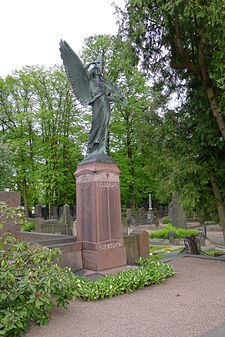
Grave of Topelius in Helsinki
Quite early in his career he began to distinguish himself as a lyric poet, with the three successive volumes of his Heather Blossoms(1845-54). The earliest of his historical romances was The Duchess of Finland, published in 1850. He was also editor-in-chief of theHelsingfors Gazette from 1841 to 1860. In 1878, Topelius was allowed to withdraw from his professional duties, but this did not sever his connection with the university; it gave him, however, more leisure for his abundant and various literary enterprises. Of all the multifarious writings of Topelius, in prose and verse, that which has enjoyed the greatest popularity is his Tales of a Barber-Surgeon, episodes of historical fiction from the days of Gustavus II. Adolphus to those of Gustavus III., treated in the manner of Sir Walter Scott; the five volumes of this work appeared at intervals between 1853 and 1867. Topelius attempted the drama also, with most success in his tragedy of Regina von Emmeritz (1854). Topelius aimed at the cultivation of a strong Finnish patriotism.[2]
Together with the composer Friedrich Pacius he wrote the libretto (in the style of Romantic nationalism) to the first Finnish opera: Kung Karls jakt. Topelius initially thought of writing a trivial entertainment, but having heard extracts from the opera project at a concert in 1851, he realized that Pacius was writing a grand opera on the theme of salvation, following the early Romantic style of Carl Maria von Weber's Der Freischütz (1821) and Oberon (1826). Topelius wrote the libretto in Swedish (though it was translated later by others), but its subject is emphatically Finnish. He also wrote the libretto for Prinsessan av Cypern, set by Fredrik Pacius and Lars-Erik Larsson.
Many of his works employed esoterical allegories harking to ancient mysteries and perhaps rosicrucian and alchemical themes, but on the other hand some of his short works examined the effects of the strong industrialisation of Finnish society.
Topelius died in his manor house of Koivuniemi, in Sipoo, Finland, where he wrote his greatest works.[3]
Ernest Thompson Seton (August 14, 1860 - October 23, 1946) was an author (published in the United Kingdom, Canada, and the US), wildlife artist, founder of the Woodcraft Indians, and one of the founding pioneers of the Boy Scouts of America (BSA). Seton also influenced Lord Baden-Powell, the founder of Scouting. His notable books related to Scouting include The Birch Bark Roll andThe Boy Scout Handbook. He is responsible for the appropriation and incorporation of what he believed to be American Indianelements into the traditions of the BSA.
Ernest Thompson Seton, born Ernest Evan Thompson[1] in South Shields, County Durham (now part of South Tyneside, Tyne and Wear), England of Scottish parents, Seton's family emigrated to Canada in 1866. Most of his childhood was spent in Toronto. As a youth, he retreated to the woods to draw and study animals as a way of avoiding his abusive father. He won a scholarship in art to the Royal Academy in London, England.[2]
On his twenty-first birthday, Seton's father presented him with a bill for all the expenses connected with his childhood and youth, including the fee charged by the doctor who delivered him. He paid the bill, but never spoke to his father again.[3][4]
Ernest changed his name to Ernest Thompson Seton, believing that Seton had been an important family name. He became successful as a writer, artist and naturalist, and moved to New York City to further his career. Seton later lived at Wyndygoul, an estate that he built in Cos Cob, a section of Greenwich, Connecticut. After experiencing vandalism by the local youth, Seton invited them to his estate for a weekend where he told them what he claimed were stories of the American Indians and of nature.[5]
He formed the Woodcraft Indians in 1902 and invited the local youth to join. Despite the name, the group was made up of non-native boys and girls. The stories became a series of articles written for the Ladies Home Journal, and were eventually collected in The Birch Bark Roll of the Woodcraft Indians in 1906.
"Lobo the King of Currumpaw" is the first story of author Ernest Thompson Seton's 1898 book Wild Animals I Have Known. Seton based the book on his experience hunting wolves in the Southwestern United States.
Summary[edit]
Lobo was an American wolf who lived in the Currumpaw valley[1] in New Mexico. During the 1890s, Lobo and his pack, having been deprived of their natural prey by settlers, turned to the settlers' livestock. The ranchers[2] tried to kill Lobo and his pack by poisoning carcasses, but the wolves removed the poisoned pieces and threw them aside. They tried to kill the wolves with traps and by hunting parties but these efforts also failed. Ernest Thompson Seton was tempted by the challenge and the alleged $1,000 bounty for capturing Lobo, the leader of the pack. Seton tried poisoning five baits, carefully covering traces of human scent, and setting them out in Lobo's territory. The following day all the baits were gone, and Seton assumed Lobo would be dead. Later, however, he found the five baits all in a pile covered in other "evidence" for which Lobo was responsible.[3][4][5]
Seton bought new, specialized traps and carefully concealed them in Lobo's territory, but he later found Lobo's tracks leading from trap to trap, exposing each. When an effort that was initially supposed to take two weeks stretched into months of failed attempts to capture Lobo, Seton became tired and frustrated. While camping out above the creek where snow geese and cranes were wintering, he found Lobo's track strangely following a set of smaller tracks. Quickly he realized Lobo's weakness: his mate, a white wolf named Blanca. Seton then set out several traps in a narrow passage thinking Blanca would fall for Seton's planted baits that Lobo had thus far managed to avoid. Finally Seton succeeded; Blanca, while trying to investigate Seton's planted cattle head, became trapped. When Seton found her, she was howling with Lobo by her side. Lobo ran to a safe distance and watched Seton and his men kill Blanca by breaking her neck with ropes tied to their horses. Seton heard the howls of Lobo for days afterward. Lobo's calls were described by Seton as having "an unmistakable note of sorrow in it... It was no longer the loud, defiant howl, but a long, plaintive wail." Although Seton felt remorse for the grieving wolf, he continued his plan to capture Lobo.[5]
Despite the danger, Lobo followed Blanca's scent to Seton's ranch house where they had taken the body. Seton then set more traps, using Blanca's body to scent them. On January 31, 1894, Lobo was caught, with each of his four legs clutched in a trap. On Seton's approach, Lobo stood despite his injuries, and howled. Touched by Lobo's bravery and loyalty to his mate, Seton could not kill him. He and his men roped Lobo, muzzled him and secured him to a horse, taking him back to the ranch. Lobo refused to acknowledge his captors; they secured him with a chain and he just gazed across the prairie. Lobo died that night without any apparent cause, although Seton knew he died of a broken heart.[5]
Legacy[edit]
Lobo's pelt is kept at the Ernest Thompson Seton Memorial Library and Museum at the Philmont Scout Ranch near Cimarron, New Mexico.[6] Until his death in 1946, Seton championed the wolf-an animal that had always previously been demonized. "Ever since Lobo", Seton later wrote, "my sincerest wish has been to impress upon people that each of our native wild creatures is in itself a precious heritage that we have no right to destroy or put beyond the reach of our children."
Seton's story of Lobo touched the hearts of many both in the US and the rest of the world and was partly responsible for changing views towards the environment and provided a spur for the starting of the conservationist movement. The story had a profound influence on one of the world's most acclaimed broadcasters and naturalists Sir David Attenborough and inspired the 1962 Disney film, The Legend of Lobo. Lobo's story was the subject of a BBC documentary directed by Steve Gooder in 2007. [7]
An account of Seton's hunt for Lobo is found in Ernest Thompson Seton: The Life and Legacy of an Artist and Conservationist by David L. Witt.[8] It is based on Seton's personal journal and other historical sources. The story is also featured in an exhibition at the New Mexico History Museum running from May 23, 2010 to May 8, 2012
Samuel Langhorne Clemens (November 30, 1835 - April 21, 1910),[1] better known by his pen name Mark Twain, was an American author and humorist. He wrote The Adventures of Tom Sawyer (1876) and its sequel, Adventures of Huckleberry Finn(1885),[2] the latter often called "The Great American Novel".
Twain grew up in Hannibal, Missouri, which provided the setting for Huckleberry Finn and Tom Sawyer. After an apprenticeship with a printer, he worked as a typesetter and contributed articles to the newspaper of his older brother, Orion Clemens. He later became a riverboat pilot on the Mississippi River before heading west to join Orion in Nevada. He referred humorously to his singular lack of success at mining, turning to journalism for the Virginia City Territorial Enterprise.[3] In 1865, his humorous story, "The Celebrated Jumping Frog of Calaveras County", was published, based on a story he heard at Angels Hotel in Angels Camp, California, where he had spent some time as a miner. The short story brought international attention, and was even translated into classic Greek.[4] His wit and satire, in prose and in speech, earned praise from critics and peers, and he was a friend to presidents, artists, industrialists, and European royalty.
Though Twain earned a great deal of money from his writings and lectures, he invested in ventures that lost a great deal of money, notably the Paige Compositor, a mechanical typesetter, which failed because of its complexity and imprecision. In the wake of these financial setbacks, he filed for protection from his creditors via bankruptcy, and with the help of Henry Huttleston Rogers eventually overcame his financial troubles. Twain chose to pay all his pre-bankruptcy creditors in full, though he had no legal responsibility to do so.
Twain was born shortly after a visit by Halley's Comet, and he predicted that he would "go out with it", too. He died the day after the comet returned. He was lauded as the "greatest American humorist of his age",[5] and William Faulkner called Twain "the father ofAmerican literature".[6]
Tom Sawyer and Huckleberry Finn
Twain's next major publication was The Adventures of Tom Sawyer, which drew on his youth in Hannibal. Tom Sawyer was modeled on Twain as a child, with traces of two schoolmates, John Briggs and Will Bowen. The book also introduced, in a supporting role, Huckleberry Finn, based on Twain's boyhood friend Tom Blankenship.
The Prince and the Pauper, despite a storyline that is omnipresent in film and literature today, was not as well received. Telling the story of two boys born on the same day who are physically identical, the book acts as a social commentary as the prince and pauper switch places. Pauper was Twain's first attempt at historical fiction, and blame for its shortcomings is usually put on Twain for having not been experienced enough in English society, and also on the fact that it was produced after a massive hit. In between the writing of Pauper, Twain had started Adventures of Huckleberry Finn (which he consistently had problems completing[75]) and started and completed another travel book, A Tramp Abroad, which follows Twain as he traveled through central and southern Europe.
Twain's next major published work, Adventures of Huckleberry Finn, solidified him as a noteworthy American writer. Some have called it the first Great American Novel, and the book has become required reading in many schools throughout the United States. Huckleberry Finn was an offshoot from Tom Sawyer and had a more serious tone than its predecessor. The main premise behind Huckleberry Finn is the young boy's belief in the right thing to do though most believed that it was wrong. Four hundred manuscript pages of Huckleberry Finn were written in mid-1876, right after the publication of Tom Sawyer. Some accounts have Twain taking seven years off after his first burst of creativity, eventually finishing the book in 1883. Other accounts have Twain working on Huckleberry Finn in tandem with The Prince and the Pauper and other works in 1880 and other years. The last fifth of Huckleberry Finn is subject to much controversy. Some say that Twain experienced, as critic Leo Marx puts it, a "failure of nerve". Ernest Hemingway once said of Huckleberry Finn:
If you read it, you must stop where the Nigger Jim is stolen from the boys. That is the real end. The rest is just cheating.
Hemingway also wrote in the same essay:
All modern American literature comes from one book by Mark Twain called Huckleberry Finn.[76]
Near the completion of Huckleberry Finn, Twain wrote Life on the Mississippi, which is said to have heavily influenced the former book.[39] The work recounts Twain's memories and new experiences after a 22-year absence from the Mississippi. In it, he also states that "Mark Twain" was the call made when the boat was in safe water - two fathoms (12 feet or 3.7 metres).
James Fenimore Cooper (September 15, 1789 - September 14, 1851) was a prolific and popular American writer of the early 19th century. His historical romances of frontier and Indian life in the early American days created a unique form of American literature. He lived most of his life in Cooperstown, New York, which was founded by his father William on property he owned. Cooper was a lifelong member of the Episcopal Church and in his later years contributed generously to it.[1] He attended Yale University for three years, where he was a member of the Linonian Society, but was expelled for misbehavior.[2]
Before embarking on his career as a writer he served in the U.S. Navy as a Midshipman, which greatly influenced many of his novels and other writings. The novel that launched his career was The Spy, a tale about counterespionage set during the Revolutionary War and published in 1821.[3] He also wrote numerous sea stories and his best-known works are five historical novels of the frontier period known as the Leatherstocking Tales. Among naval historians Cooper's works on the early U.S. Navy have been well received, but they were sometimes criticized by his contemporaries. Among his most famous works is the Romantic novel The Last of the Mohicans, often regarded as his masterpiece.[4]
Early life and family[edit]
James Fenimore Cooper was born in Burlington, New Jersey in 1789, to William Cooper and Elizabeth (Fenimore) Cooper, the eleventh of 12 children, most of whom died during infancy or childhood. He was descended from James Cooper, of Stratford-upon-Avon, England, who emigrated to the American colonies in 1679. James and his wife wereQuakers who purchased plots of land in New Jersey and Pennsylvania. Seventy-five years after his arrival in America, his great-grandson, William, was born on December 2, 1754.[5][6] Shortly after James' first birthday, his family moved to Cooperstown, New York, a community founded by his father on a large piece of land which he had bought for development. Later his father was elected as a United States Congressman from Otsego County. Their town was in a central area of New York that had previously been occupied by the Iroquois of the Six Nations. The Iroquois were forced to cede their territory after British defeat in the Revolutionary War, as they had been allies.[4]
Shortly after the American Revolutionary War, the state opened up these former Iroquois lands for sale and development. Cooper's father purchased several thousand acres of land in upstate New York along the head-waters of the Susquehanna River. By 1788, William Cooper had selected and surveyed the site where Cooperstown would be established. He erected a home on the shore of Otsego lake, and in the autumn of 1790 moved his family there. He soon began construction of the mansion that would be known as Otsego Hall. It was completed in 1799 when James was ten.[6]
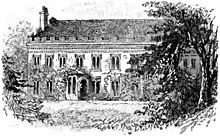
Otsego Hall, Cooper's home
At the age of 13, Cooper was enrolled at Yale, but, after inciting a dangerous prank that involved blowing up another student's door (after having already locked a donkey in a recitation room [7]), Cooper was expelled in his third year without completing his degree. Disenchanted with college, he obtained work in 1806 as a sailor and at the age of 17 joined the crew of a merchant vessel.[2][8] By 1811, he obtained the rank of midshipman in the fledgling United States Navy, conferred upon him on an officer's warrant signed by Thomas Jefferson.[4][9]
At 20, Cooper inherited a fortune from his father. On January 1, 1811, at age 21, he married Susan Augusta de Lancey, at Mamaroneck, Westchester County, New York.[10] She was the daughter of a wealthy family who remained loyal to Great Britain during the American Revolution. They had seven children, five of whom lived to adulthood. Their daughter Susan Fenimore Cooper was a writer on nature, female suffrage, and other topics. She and her father often edited each other's work.[11] Among his descendants was Paul Fenimore Cooper (1899-1970), who also became a writer.[12]
Nathaniel Hawthorne (/ˈhɔːˌθɔrn/; born Nathaniel Hathorne; July 4, 1804 - May 19, 1864) was an American novelist, Dark Romantic, and short story writer.
He was born in 1804 in Salem, Massachusetts, to Nathaniel Hathorne and the former Elizabeth Clarke Manning. His ancestors include John Hathorne, the only judge involved in the Salem witch trials who never repented of his actions. Nathaniel later added a "w" to make his name "Hawthorne" in order to hide this relation. He entered Bowdoin College in 1821, was elected to Phi Beta Kappain 1824, and graduated in 1825. Hawthorne published his first work, a novel titled Fanshawe, in 1828; he later tried to suppress it, feeling it was not equal to the standard of his later work. He published several short stories in various periodicals, which he collected in 1837 as Twice-Told Tales. The next year, he became engaged to Sophia Peabody. He worked at a Custom House and joined Brook Farm, a transcendentalist community, before marrying Peabody in 1842. The couple moved to The Old Manse inConcord, Massachusetts, later moving to Salem, the Berkshires, then to The Wayside in Concord. The Scarlet Letter was published in 1850, followed by a succession of other novels. A political appointment took Hawthorne and family to Europe before their return to The Wayside in 1860. Hawthorne died on May 19, 1864, and was survived by his wife and their three children.
Much of Hawthorne's writing centers on New England, many works featuring moral allegories with a Puritan inspiration. His fiction works are considered part of the Romantic movement and, more specifically, Dark romanticism. His themes often center on the inherent evil and sin of humanity, and his works often have moral messages and deep psychological complexity. His published works include novels, short stories, and a biography of his friend Franklin Pierce.
Literary style and themes
Hawthorne's works belong to romanticism or, more specifically, dark romanticism, cautionary tales that suggest that guilt, sin, and evil are the most inherent natural qualities of humanity. Many of his works are inspired by Puritan New England, combining historical romance loaded with symbolism and deep psychological themes, bordering on surrealism. His depictions of the past are a version of historical fiction used only as a vehicle to express common themes of ancestral sin, guilt and retribution. His later writings also reflect his negative view of the Transcendentalism movement.
Hawthorne was predominantly a short story writer in his early career. Upon publishing Twice-Told Tales, however, he noted, "I do not think much of them," and he expected little response from the public. His four major romances were written between 1850 and 1860: The Scarlet Letter (1850), The House of the Seven Gables (1851), The Blithedale Romance (1852) and The Marble Faun (1860). Another novel-length romance, Fanshawe was published anonymously in 1828. Hawthorne defined a romance as being radically different from a novel by not being concerned with the possible or probable course of ordinary experience. In the preface to The House of the Seven Gables, Hawthorne describes his romance-writing as using "atmospherical medium as to bring out or mellow the lights and deepen and enrich the shadows of the picture".
Feminists and historicists have in recent years revalued Hawthorne's thematic depictions of women as figurations of transformative potential. These scholars are interested particularly in stalwart Hester Prynne, in her own forward-looking words the "destined prophetess, . . . angel and apostle of the coming revelation". Camille Paglia saw Hester as mystical, "a wandering goddess still bearing the mark of her Asiatic origins ... moving serenely in the magic circle of her sexual nature". Lauren Berlant termed take-charge but caring Hester "the citizen as woman [personifying] love as a quality of the body that contains the purest light of nature," her resulting "traitorous political theory" a "Female Symbolic" literalization of futile Puritan metaphors. Historicists view Hester as a protofeminist and avatar of the self-reliance and responsibility that led to women's suffrage and reproductive emancipation. Anthony Splendora found her likely literary genealogy among other archetypally fallen but redeemed women, both historic and mythic, who stood up for their meritorious rights: to wit, Psyche of ancient legend, Heloise of twelfth-century France's tragedy involving world-renowned philosopher Peter Abelard, Anne Hutchinson (America's first heretic, circa 1636), and Hawthorne family friend Margaret Fuller. In Hester's first Scarlet Letter appearance, Hawthorne likens her, "infant at her bosom", to Mary, Mother of Jesus, "the image of Divine Maternity". Her potentiality as agency of transformation is thus immediate and specific. In her study of Victorian literature, in which such "galvanic outcasts" as Hester feature prominently, Nina Auerbach went so far as to name Hester's fall and subsequent redemption "the novel's one unequivocally religious activity".Regarding Hester as a deity figure, Meredith A. Powers found in Hester's characterization "the earliest in American fiction that the archetypal Goddess appears quite graphically," like a Goddess "not the wife of traditional marriage, permanently subject to a male overlord"; Powers noted "her syncretism, her flexibility, her inherent ability to alter and so avoid the defeat of secondary status in a goal-oriented civilization".Aside from Hester Prynne, the cynosural women of Hawthorne's other novels - from Ellen Langton of Fanshawe to Zenobia and Priscilla of The Blithedale Romance, Hilda and Miriam of The Marble Faun and Phoebe and Hepzibah of The House of the Seven Gables - are more fully realized than his male characters, who merely orbit them. This observation is equally true of his short-story protagonistas, central females who serve as unambiguous allegorical foci: Rappaccini's beautiful but life-altering, garden-bound, Eve-like daughter; provocatively almost-perfect Georgiana of "The Birthmark"; the unpardonably sinned-against (abandoned) Ester of "Ethan Brand"; and goodwife Faith Brown, linchpin of Young Goodman Brown's very belief in God. "My Faith is gone!" Brown exclaims in despair upon seeing his wife at the Witches' Sabbath. Hawthorne could not have been more explicit in illuminating his view of the significance of, and his hopeful sympathies with, women.
Hawthorne also wrote nonfiction. In 2008, The Library of America selected Hawthorne's "A Collection of Wax Figures" for inclusion in its two-century retrospective of American True Crime.
Herman Melville (August 1, 1819 - September 28, 1891) was an American novelist, short story writer, and poet from theAmerican Renaissance period. Most of his writings were published between 1846 and 1857. Best known for his sea adventure Typee(1846) and his whaling novel Moby-Dick (1851), he was almost forgotten during the last thirty years of his life. Melville's writing draws on his experience at sea as a common sailor, exploration of literature and philosophy, and engagement in the contradictions of American society in a period of rapid change. The main characteristic of his style is probably pervasive allusion, reflecting his written sources. Melville's way of adapting what he read for his own new purposes, scholar Stanley T. Williams wrote, "was a transforming power comparable to Shakespeare's".
Born in New York City as the third child of a merchant in French dry-goods, Melville ended his formal education abruptly after his father died in 1832, shortly after bankruptcy left the family in financial straits. Melville briefly became a schoolteacher before he took to sea in 1839. This voyage to Liverpool as a common sailor on a merchant ship became the basis for his fourth book, Redburn(1849). In late December 1840 he signed up aboard the Acushnet for his first whaling voyage, but jumped ship eighteen months later in the Marquesas Islands. His first book, Typee (1846), a fictionalized account of his life among the natives there, became such a success that he worked up a sequel, Omoo (1847). The same year Melville married Elizabeth Knapp Shaw; their four children were born between 1849 and 1855.
In August 1850, Melville moved his family to a farm near Pittsfield, Massachusetts, where he established a profound but short-lived friendship with Nathaniel Hawthorne. Moby-Dick was published in 1851 to mixed reviews, but proved a commercial failure. Less than a year later, Melville's career as a popular author effectively ended with the cool reception of Pierre. The next years he turned to writing short fiction for magazines, such as "Bartleby, the Scrivener" and "Benito Cereno." After the serialized novel Israel Potter was published as a book in 1855, the short stories were collected in 1856 as The Piazza Tales. In 1857, Melville voyaged to England and the Near East; twenty years later, he worked his experience in Egypt and Palestine into an epic poem, Clarel: A Poem and Pilgrimage in the Holy Land (1876). In 1857 he published The Confidence-Man, his last prose work during his lifetime. Having secured a position as Customs Inspector, he moved to New York. He turned to poetry, the first example of which is his poetic reflection on the moral questions of the Civil War, Battle-Pieces and Aspects of the War(1866).
In 1867 his oldest child, Malcolm, died at home from a self-inflicted gunshot. In 1886 Melville retired as Customs Inspector and privately published two volumes of poetry. During the last years of his life, he returned to prose again and worked on Billy Budd, Sailor. Left unfinished at his death, it was eventually published in 1924; it was adapted as a Broadway stage play and as an English opera in 1951, and a decade later as a film. Melville's death in 1891 from cardiovascular disease subdued the reviving interest in him. The centennial in 1919 of his birth was near the starting point of the "Melville Revival," as scholars returned to his work and life, and Melville's writings have been appreciated as world classics.
1850-1851: Hawthorne and Moby-Dick
At first his work on Moby-Dick moved swiftly. In early May 1850 Melville wrote to Richard Henry Dana, also a sea author, saying he was already "half way" done. In June he described the book to his English publisher as "a romance of adventure, founded upon certain wild legends in the Southern Sperm Whale Fisheries," and promised it would be done by the fall. Since the manuscript for the book has not survived, it is impossible to know for sure its state at this critical juncture. Over the next several months, Melville radically transformed his initial plan, conceiving what has been described as "the most ambitious book ever conceived by an American writer".
In September 1850 the Melvilles purchased Arrowhead, a farm house in Pittsfield, Massachusetts. (It is now preserved as a house museum and has been designated as aNational Historic Landmark). Here Melville and Elizabeth lived for 13 years. While living at Arrowhead, Melville befriended the author Nathaniel Hawthorne, who lived in nearbyLenox. Melville wrote ten letters to Hawthorne, "all of them effusive, profound, deeply affectionate" Melville was inspired and encouraged by his new relationship with Hawthorne during the period that he was writing Moby-Dick. He dedicated this new novel to Hawthorne, though their friendship was to wane only a short time later.
On 18 October The Whale was published in Britain in three volumes, and on 14 November Moby-Dick appeared in the United States as a single volume. In between these dates, on 22 October 1850, the Melvilles' second child, Stanwix, was born.
Themes
As early as 1839, in the juvenile sketch "Fragments from a Writing Desk," Melville explores a problem which would reappear in the short stories "Bartleby" (1853) and "Benito Cereno" (1855): the impossibility to find common ground for mutual communication. The sketch centers on the protagonist and a mute lady, leading scholar Sealts to observe: "Melville's deep concern with expression and communication evidently began early in his career." According to scholar Nathalia Wright, Melville's characters are all preoccupied by the same intense, superhuman and eternal quest for "the absolute amidst its relative manifestations." There can be no doubt that this is the essence of every segment of Melville's whole body of work: "All Melville's plots describe this pursuit, and all his themes represent the delicate and shifting relationship between its truth and its illusion." It is not clear, however, what the moral and metaphysical implications of this quest are, because Melville did not distinguish between these two aspects.Throughout his life Melville struggled with and gave shape to the same set of epistemological doubts and the metaphysical issues these doubts engendered. An obsession for the limits of knowledge led to the question of God's existence and nature, the indifference of the universe, and the problem of evil.
John Griffith "Jack" London (born John Griffith Chaney, January 12, 1876 - November 22, 1916) was an American author, journalist, and social activist. A pioneer in the then-burgeoning world of commercial magazine fiction, he was one of the first fiction writers to obtain worldwide celebrity and a large fortune from his fiction alone.[6]
Some of his most famous works include The Call of the Wild and White Fang, both set in the Klondike Gold Rush, as well as the short stories "To Build a Fire", "An Odyssey of the North", and "Love of Life". He also wrote of the South Pacific in such stories as "The Pearls of Parlay" and "The Heathen", and of the San Francisco Bay area in The Sea Wolf.
London was part of the radical literary group "The Crowd" in San Francisco and a passionate advocate of unionization, socialism, and the rights of workers. He wrote several powerful works dealing with these topics, such as his dystopian novel The Iron Heel, his non-fiction exposé The People of the Abyss, and The War of the Classes.
Short stories
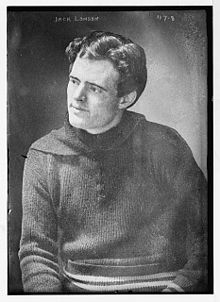
Jack London (date unknown)
Western writer and historian Dale L. Walker writes:
London's true métier was the short story ... London's true genius lay in the short form, 7,500 words and under, where the flood of images in his teeming brain and the innate power of his narrative gift were at once constrained and freed. His stories that run longer than the magic 7,500 generally-but certainly not always-could have benefited from self-editing.
London's "strength of utterance" is at its height in his stories, and they are painstakingly well-constructed.[citation needed] "To Build a Fire" is the best known of all his stories. Set in the harsh Klondike, it recounts the haphazard trek of a new arrival who has ignored an old-timer's warning about the risks of traveling alone. Falling through the ice into a creek in seventy-five-below weather, the unnamed man is keenly aware that survival depends on his untested skills at quickly building a fire to dry his clothes and warm his extremities. After publishing a tame version of this story-with a sunny outcome-in The Youth's Companion in 1902, London offered a second, more severe take on the man's predicament in The Century Magazine in 1908. Reading both provides an illustration of London's growth and maturation as a writer. As Labor (1994) observes: "To compare the two versions is itself an instructive lesson in what distinguished a great work of literary art from a good children's story."[A]
Other stories from the Klondike period include: "All Gold Canyon", about a battle between a gold prospector and a claim jumper; "The Law of Life", about an aging American Indian man abandoned by his tribe and left to die; "Love of Life", about a trek by a prospector across the Canadian tundra; "To the Man on Trail," which tells the story of a prospector fleeing the Mounted Police in a sled race, and raises the question of the contrast between written law and morality; and "An Odyssey of the North," which raises questions of conditional morality, and paints a sympathetic portrait of a man of mixed White and Aleut ancestry.
London was a boxing fan and an avid amateur boxer. "A Piece of Steak" is a tale about a match between older and younger boxers. It contrasts the differing experiences of youth and age but also raises the social question of the treatment of aging workers. "The Mexican" combines boxing with a social theme, as a young Mexican endures an unfair fight and ethnic prejudice in order to earn money with which to aid the revolution.
Several of London's stories would today be classified as science fiction. "The Unparalleled Invasion" describes germ warfare against China; "Goliath" about an irresistible energy weapon; "The Shadow and the Flash" is a tale about two brothers who take different routes to achieving invisibility; "A Relic of the Pliocene" is a tall tale about an encounter of a modern-day man with a mammoth. "The Red One" is a late story from a period when London was intrigued by the theories of the psychiatrist and writer Jung. It tells of an island tribe held in thrall by an extraterrestrial object.
Some nineteen original collections of short stories were published during London's brief life or shortly after his death. There have been several posthumous anthologies drawn from this pool of stories. Many of these stories were located in the Klondike and the Pacific. A collection of Jack London's San Francisco Stories</<font color="#000000"> was published in October 2010 by Sydney Samizdat Press.
